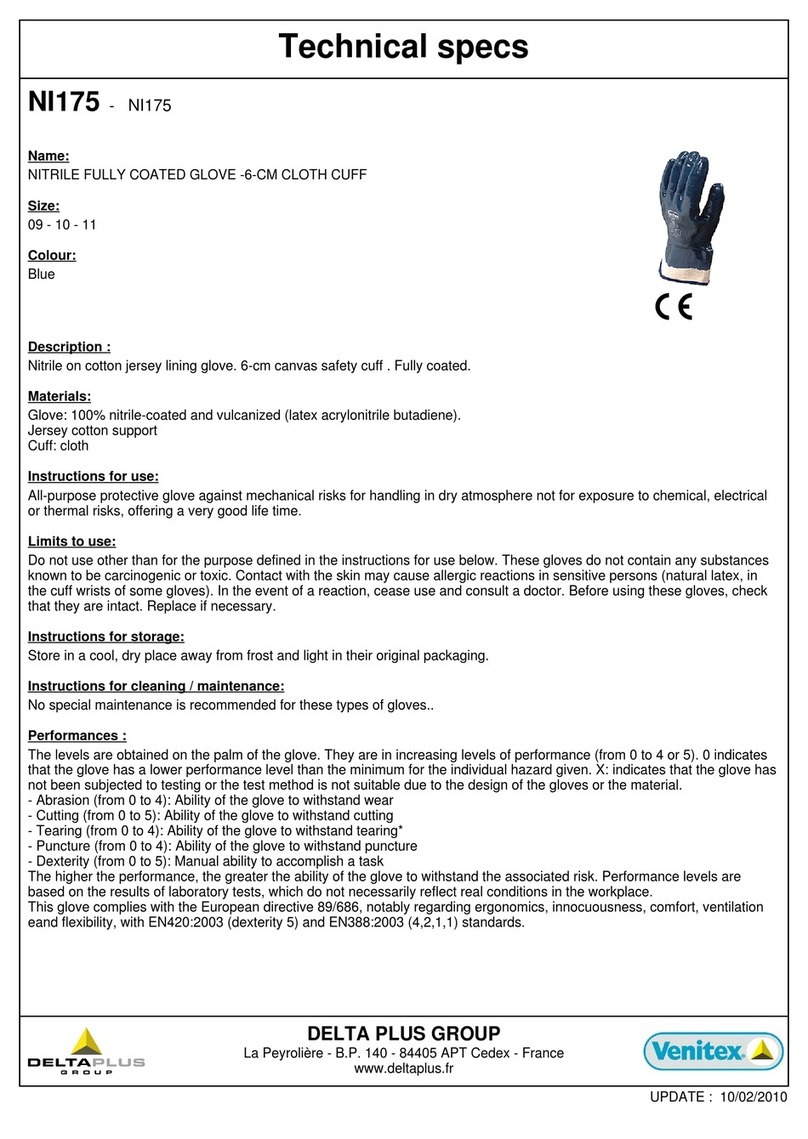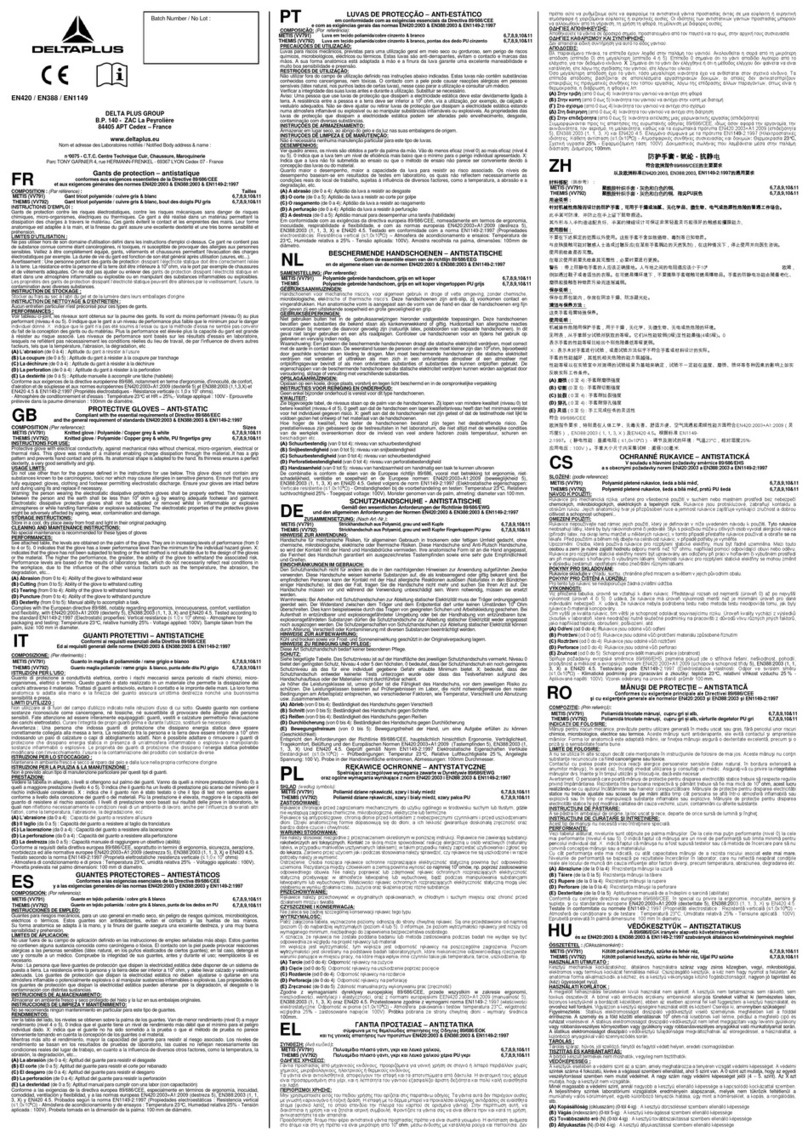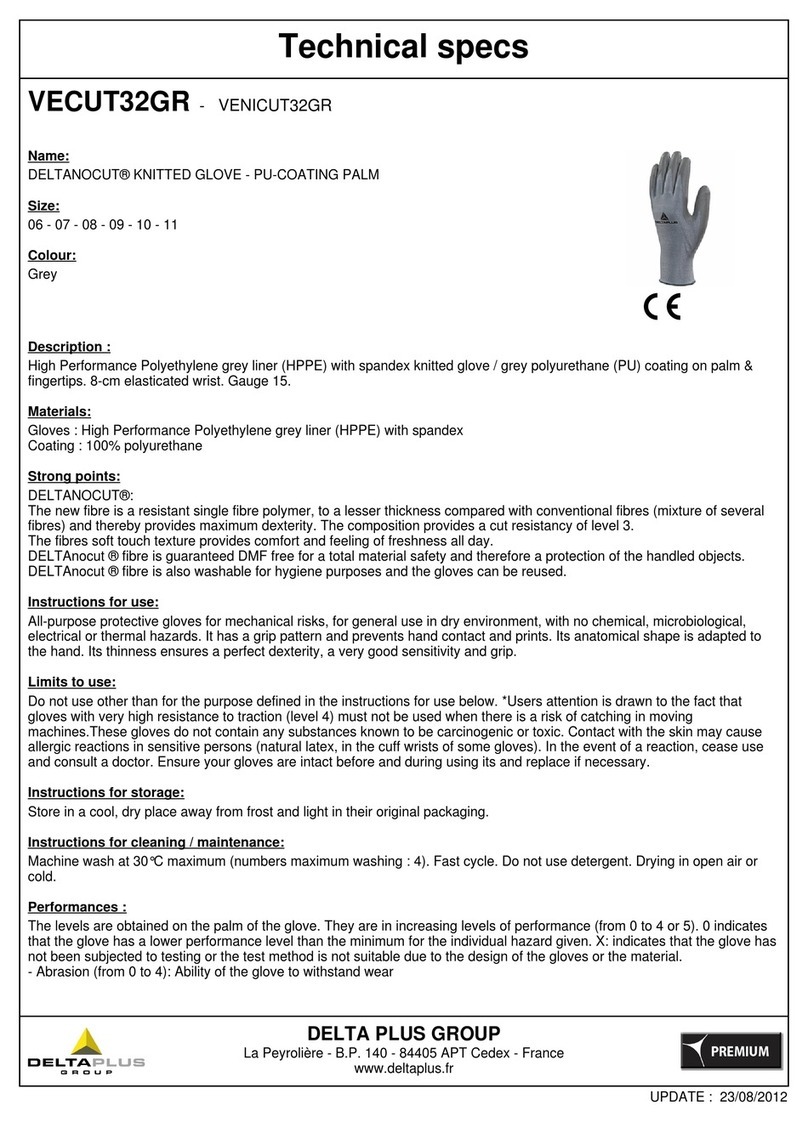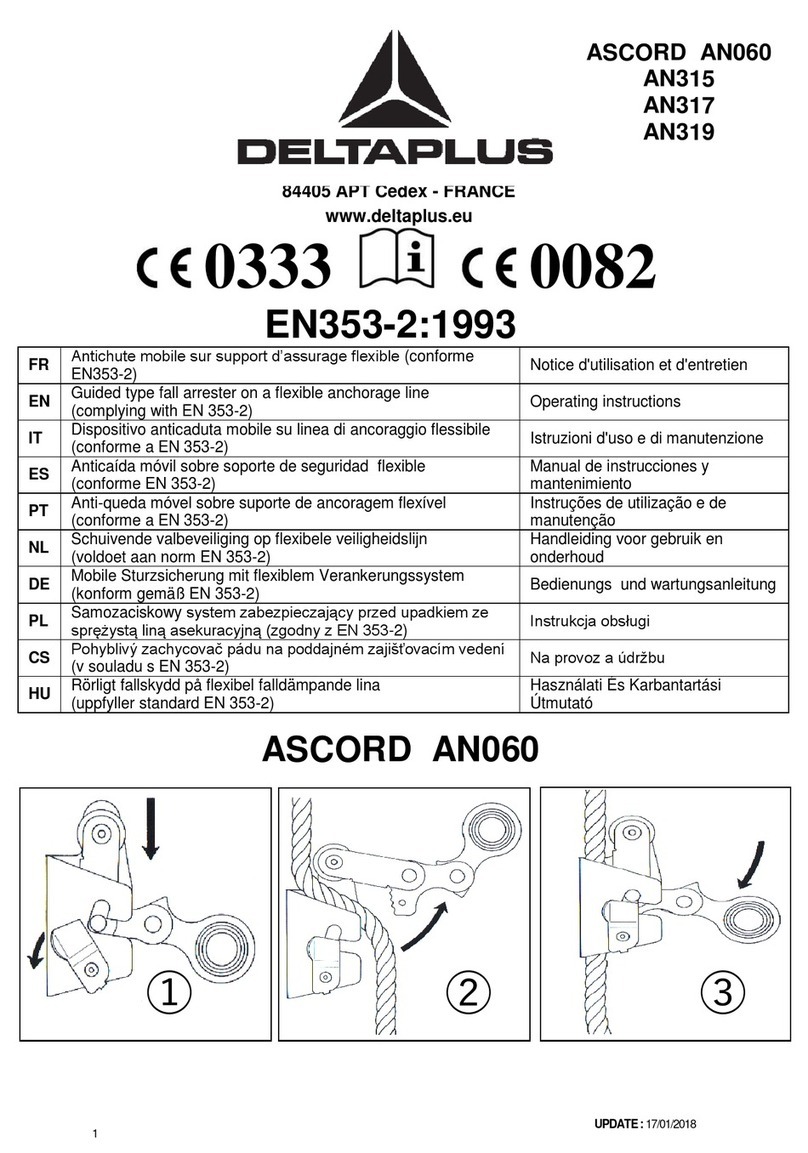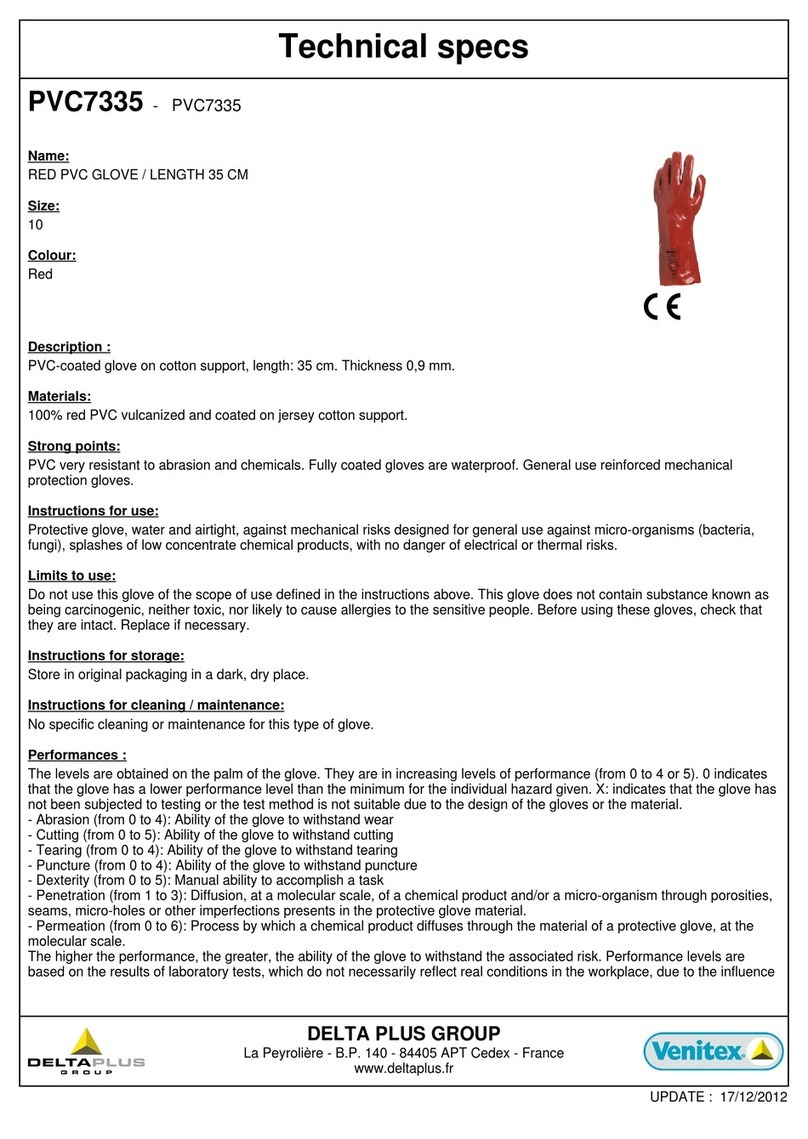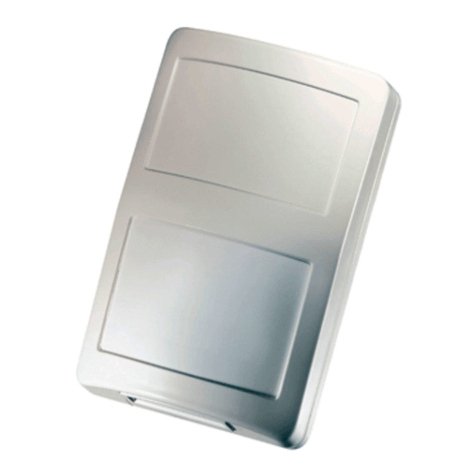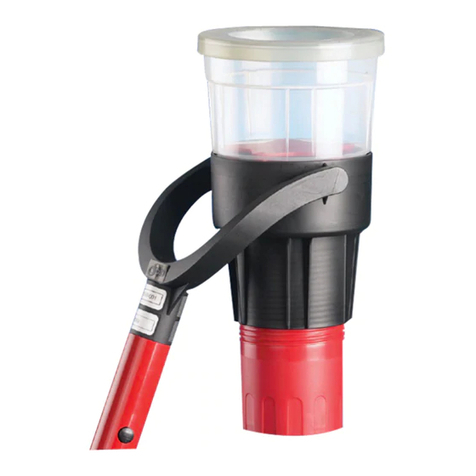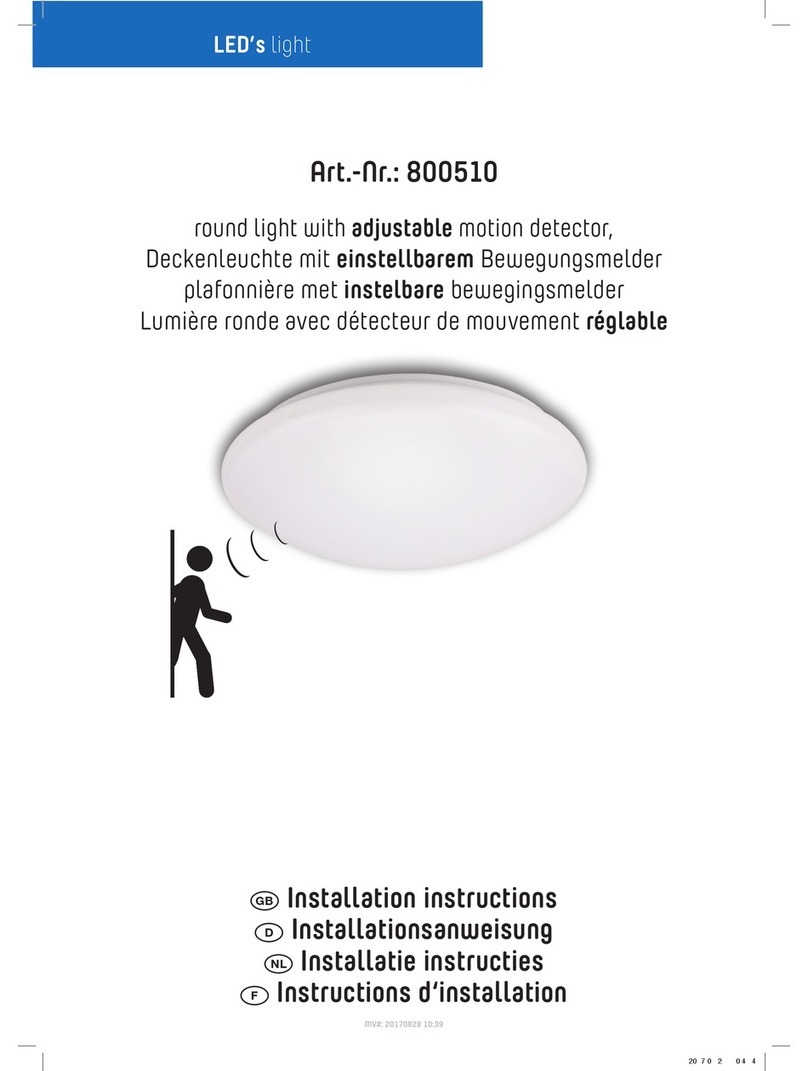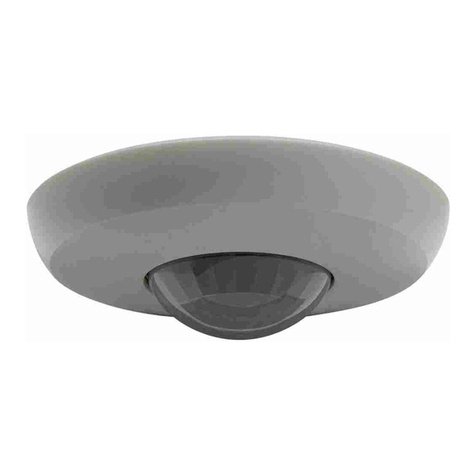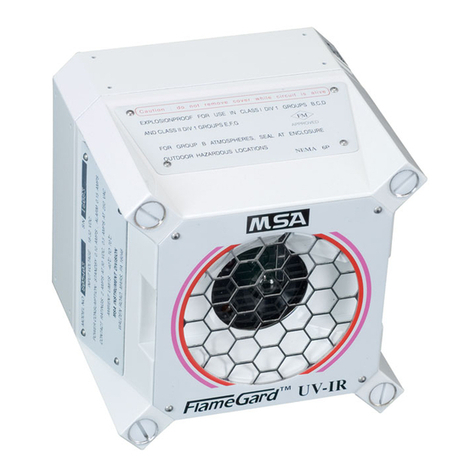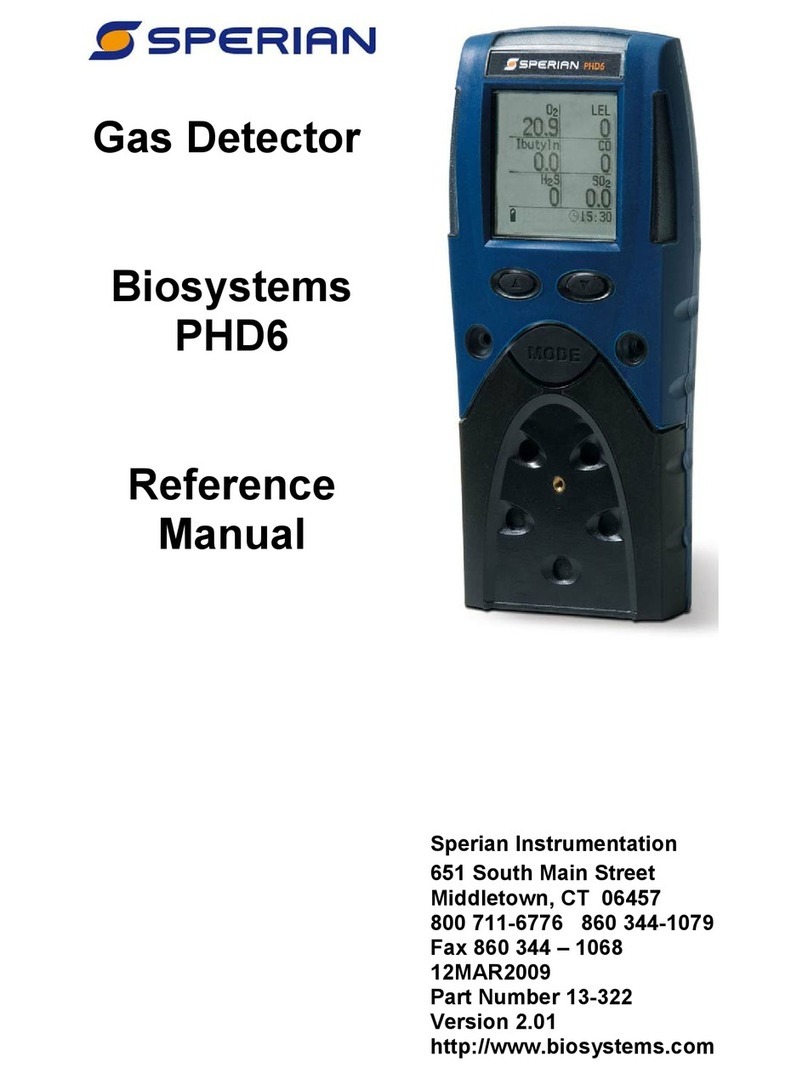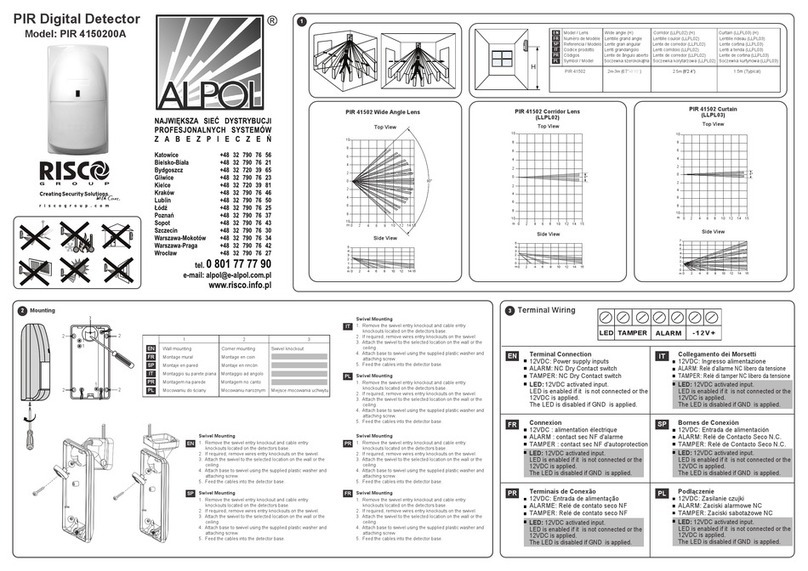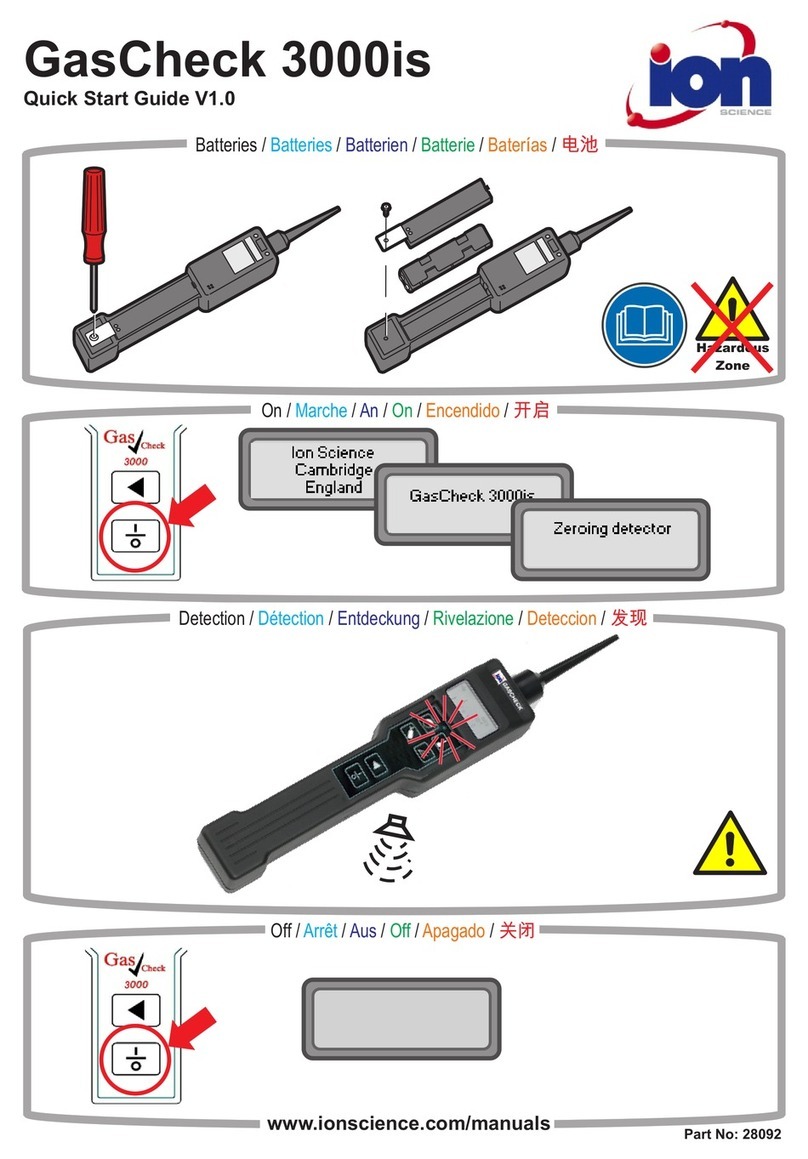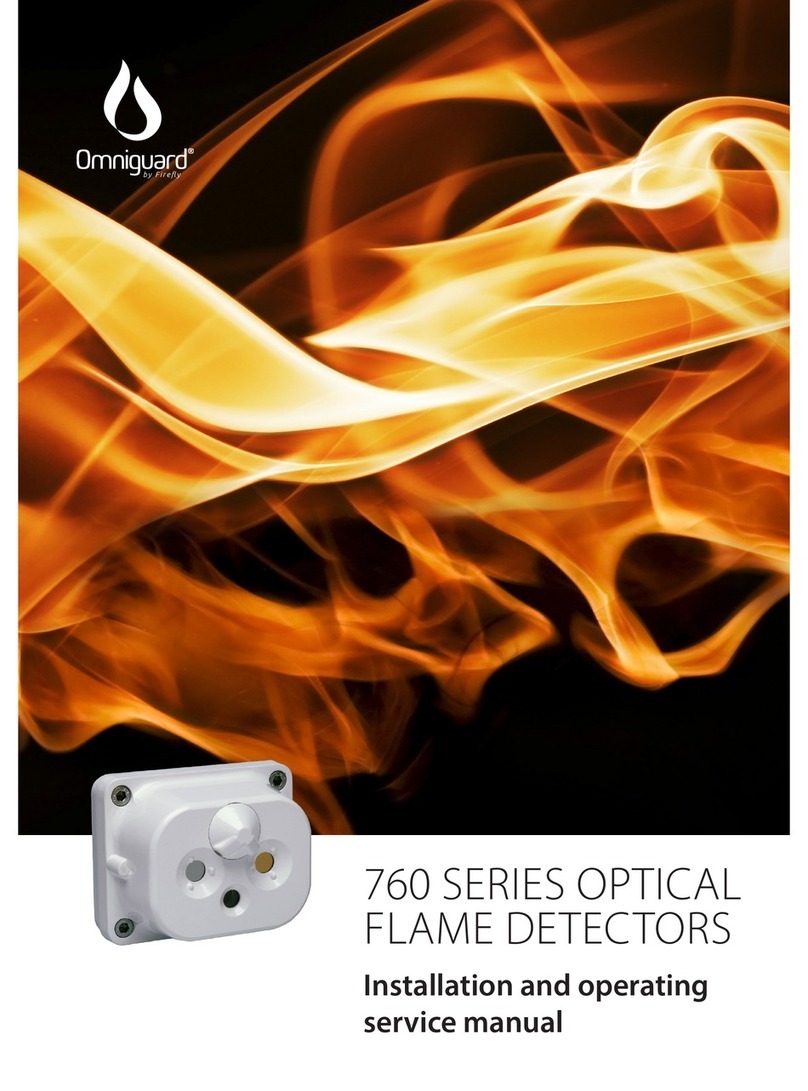DELTA PLUS HAR11 User manual

HARNAIS HAxxx / ELARAxxx DATE : 14/03/2017 1/80
B.P. 140 - ZAC de La Peyrolière
84405 APT CEDEX - FRANCE
0333 0082
EN361:2002
DELTA PLUS GROUP
B.P. 140 - ZAC de La Peyrolière
84405 APT CEDEX - FRANCE
www.deltaplus.eu
FR HARNAIS D’ANTICHUTE (conforme EN361) Notice d'utilisation et d'entretien
EN FALL ARREST HARNESS (according to EN361) Operating instructions
IT IMBRACATURA ANTICADUTA (conforme a EN361) Istruzioni d'uso e di manutenzione
ES ARNÉS ANTICAÍDA (en conformidad con EN361) Manual de instrucciones y mantenimiento
PT ARNES DO DISPOSITIVO ANTI-QUEDA (em conformidade com a norma EN361) Instruções de utilização e de manutenção
NL VALBESCHERMINGSHARNAS (conform EN361) Handleiding voor gebruik en onderhoud
DE FALLSCHUTZGURT (konform gemäß EN361) Bedienungs und wartungsanleitung
PL UPRZĄŻ ZABEZPIECZAJĄCA PRZED UPADKIEM (zgodna z normą EN361) Instrukcja obsługi
EL ΑΟΡΤΗΡΑΣ ΠΡΟΣΤΑΣΙΑΣ ΑΠΟ ΤΗΝ ΠΤΩΣΗ (συμφωνα με το πρότυπο EN361) Οδηγίες χρήσης και συντήρησης
ZH 防坠安全带(符合EN361标准) 操作说明
CS ZACHYCOVACÍ POSTROJE (v souladu s EN361) Na provoz a údržbu
RO CENTURĂ COMPLEXĂ DE SIGURANȚĂ ANTICĂDERE (conform EN361) Instrucţiuni de utilizare și de întreţinere
HU ZUHANÁSGÁTLÓ TESTHEVEDERZET (megfelel EN361) Használati És Karbantartási Útmutató
HR UPRTAČ (u skladu s EN361) Upute za uporabu i održavanje
SV FALLSKYDDSSELE (i överensstämmelse med EN361) Informasjon om bruk og vedlikehold
DA FALDSIKRINGSSELE (i overensstemmelse med EN361) brugs og vedligeholdelsesvejledning
FI PUTOAMISENESTOVALJAAT (EN361) käyttö ja huolto ohje
SK POSTROJ (v súlade s normou EN361) Návod na používanie a údržbu
RU ПОЯС ПРЕДОХРАНИТЕЛЬНЫЙ ЛЯМОЧНЫЙ (соответствует EN361) инструкция по эксплуатации и уходу
ET KUKKUMISKAITSERIHMAD (vastavad standardile EN361) Kasutus ja hooldusjuhend
SL PAS ZA ZAŠČITO PROTI PADCEM (ustreza EN361) Navodila za uporabo in vzdrževanje
LV KRITIENA AIZTURĒŠANAS IEJŪGS (atbilst EN361) Lietošanas un tehniskās apkopes instrukcija
LT KŪNO SAUGOS DIRŽAI (pagal EN361) Naudojimo ir priežiūros instrukcija
TR PARAŞÜT TİPİ EMNİYET KEMERİ (EN361 uyumludur) Işletme ve bakim
UA Строп захисту від падіння (згідно EN361) Інструкція з експлуатації
AR ( EN361)

HARNAIS HAxxx / ELARAxxx DATE : 14/03/2017 2/80
B.P. 140 - ZAC de La Peyrolière
84405 APT CEDEX - FRANCE
FR Lire la notice d’instruction avant
utilisation.
Toutes utilisations autres que celles décrites dans cette notice
sont à exclure. Logo marque du modèle
EN Read the instructions before
use.
Any use other than these described in this leaflet are to be
excluded. Model brand logo
IT Prima dell’uso leggere le
istruzioni.
È escluso qualunque uso diverso da quelli descritti nella
presente istruzione. Logo e marca del modello
ES Lea el folleto de instrucciones
antes de su utilización.
Queda excluida cualquier otra utilización distinta a las descritas
en este manual de instrucciones. Logo marca del modelo
PT Ler atentamente as instruções
antes de utilizar.
Quaisquer utilizações para além daquelas descritas nestas
instruções deverão ser excluídas. Logotipo marca do modelo
NL Gelieve voor gebruik de
gebruiksaanwijzing te lezen.
Alleen geschikt voor het in deze handleiding omschreven
gebruik. Logo merk van het model
DE Vor der Benutzung
Gebrauchsanleitung lesen!
Alle anderen Verwendungen, die nicht hier beschrieben sind,
sind auszuschließen. Markenlogo des Modells
PL Przed uyciem naley
zapoznasiz instrukcj.
Wszelkie zastosowania niezgodne z niniejszinstrukcjs
niedozwolone. Logo marki modelu
EL
.
.
ZH 使用前请仔细阅读说明。 禁止本产品所述使用方法以外的任何产品使用。 品牌标志
CS Ped použitím si pette
pokyny.
Veškeré jiné použití než je popsáno v tomto manuálu jsou
vyloueny Logo oznaení modelu
RO Citii instruciunile înainte de
utilizare.
Toate utilizrile, altele decât cele descrise în acest manual
trebuie sfie excluse. Logoul marcal modelului
HU A használati útmutatót minden
használat eltt el kell olvasni. Minden az útmutatóban foglaltaktól eltérhasználat kizárt. Márkanév és logo
HR Prije uporabe proitate upute. Svi koristi osim onih opisanih u ovom priruniku su biti iskljueni Logo marke modela
SV Läs bruksanvisningen innan
användning.
Alla andra användningsområden än de som beskrivs i denna
manual kommer att uteslutas Märkets logotyp
DA instruktionshæftet før
ibrugtagning.
Alle andre anvendelser end dem, der beskrives i denne manual,
skal udelukkes Logo for modelmærket
FI Lue käyttöohje ennen käyttöä. Kaikki muuhun kuin tässä oppaassa kuvatut toimet jäävät
soveltamisalan ulkopuolelle Merkkilogo
SK Pred použitím si preítajte
návod na používanie.
Všetky iné použitie ako je popísané v tomto manuáli sú
vylúené Logo znaky modelu
ET Enne kasutamist lugege juhend
läbi.
Igasuguseks kasutamiseks, välja arvatud käesolevas juhendis
kirjeldatud ei ole lubatud Toote kaubamärk
SL Prosimo, preberite navodila
pred uporabo.
Vse druge uporabe, kot so opisani v tem prironiku je treba
izkljuiti Logo in oznaka modela
LT Prieš naudodami perskaitykite
instrukcij.
Visi, išskyrus tas, kurios aprašytos šiame vadove turi bti
išbrauktos
„Modelio preks ženklo
logotipas
LV Pirms lietošanas izlast
lietošanas instrukciju.
Visiem lietošanas veidiem, kas nav aprakstti šajrokasgrmat
ir jizsldz
Modea preu zmes
logotips
RU ,
.
, ,
DeltaPlus
TR üretici tarafından salanan
bilgilerebavurun.
Bu broürde açıklanan bu baka herhangi bir kullanımı
dahil edilmelidir. TarafındanMarka
UA . - , ,
. Logo
AR
⑫

HARNAIS HAxxx / ELARAxxx DATE : 14/03/2017 3/80
B.P. 140 - ZAC de La Peyrolière
84405 APT CEDEX - FRANCE
TABLE OF REFERENCES
MODEL
⑨⑩⑪
FRONT WEBBING
⑤⑥
COMPONENT BUCKEL
OPTION
100kg / 140Kg /
150Kg
HARNESS POINTS
BACK - FRONT
(DORSAL- STERNAL)
EN361
BELT
POINTS
COMPONENTS STANDARDS
EN358
HAR11
PB
MB
MFB
140Kg A - HARNESS EN361 : 2002
HAR12
PB
MB
MFB
140Kg A - A/2 - HARNESS EN361 : 2002
HAR12GIL
HAR12GILJA
HAR12GILOR
PB
MB
MFB
140Kg A - A/2 -
HARNESS EN361 : 2002
VEST EN471 : 2007
HAR12GILNO
PB
MB
MFB
140Kg A - A/2 -
HARNESS EN361 :2002
VEST -
HAR14
PB
MB
MFB
140Kg A - A/2 2
HARNESS EN361 : 2002
BELT EX120 EN358 : 1999
HAR22
PB
MB
MFB
150Kg A - A/2 - HARNESS EN361 : 2002
HAR23 MFB 150K
g
A
-
A
-
A
- HARNESS EN361 : 2002
HAR24
PB
MB
MFB
150Kg A - A/2 2 HARNESS EN361 : 2002
BELT EX220 EN358 : 1999
HAR23GIL MFB 150Kg A - A - A - HARNESS EN361 : 2002
VEST -
HAR32
ANATOM
PB
MB
MFB
⑤⑥ AUTOMATIC
150Kg A - A/2 - HARNESS EN361 : 2002
HAR35
EOLIEN MFB 150Kg A - A - A 2
HARNESS EN361 : 2002
BELT EX320 EN358 : 1999
HAR35A
EOLIEN
MFB
⑤⑥ AUTOMATIC 150Kg A - A - A 2 HARNESS EN361 : 2002
BELT EX320A EN358 : 1999
ELARA160
PB
MB
MFB
100Kg A -
HARNESS EN361 : 2002
ENERGY
ABSORBER EN355 : 2002
HAR42EL MB 100Kg A - A/2 - HARNESS EN361 : 2002
HAR44EL MB 100Kg A - A/2 2
HARNESS EN361 : 2002
BELT E
X
420E
L
EN358 : 1999

HARNAIS HAxxx / ELARAxxx DATE : 14/03/2017 4/80
B.P. 140 - ZAC de La Peyrolière
84405 APT CEDEX - FRANCE
COMPONENT BUCKEL AUTOMATIC BELT TM = (XXS, XS)
GT = (S, M, L)
XX = (XL, XXL, XXXL)
EN471 BACK FRONT
EN COMPONENT BUCKEL AUTOMATIC BELT SIZE SYSTEM VEST BACK FRONT
FR Composant Boucle Automatique Ceinture Système de taille Gilet DORSAL STERNAL
IT Componenti Fibbia Automatico Cintura Sistema di taglie Gilet Dorsale Sternale
ES Componente Hebilla Automático Cinturón Sistema de tallas Chaleco Dorsal Esternal
PT Componente Anel Automáticos Cinto Sistema de
tamanhos Colete Dorsal Esternal
NL Componenten Lus Automatisch Riem Maatsysteem Gilet Op de rug Borst
DE Bestandteile Schnalle Automatisch Gurt Größentabelle Weste Rücken Brustfangöse
PL Elementy Klamra Automatyczny Pas System miar Kamizelka Na plecach Na mostku
EL συνιστώσες θηλιά Αυτόματο
ZH 的零件 环扣 自动装置 安全带 尺寸 背带 背部 胸前
CS Komponenty Přezce Automatický Pás Systém velikostí Vesta Na zádech Na hrudi
RO Componente Cataramă Automat CenturSistem de mrimi VestDorsal Sternal
HU Összetevők Csatjához Automata Deréköv Méretjelölés Mellény Hátsó Mells
HR Komponente Kopču Automatski Remen Sustav veliina Prsluk Na leima A prsima
SV Komponenter Spänne Automatisk Bälte Storlekar Väst Rygg Sternum
DA Bestanddele Ring Automatisk Livrem Størrelsessystem Vest Ryg Bryst
NO Komponenter Beltespenne Automatisk Livrem Kokojärjestelmä Vest Dorsal Sternal
FI Osat Kiinnitintä Automaattinen Vyö Størrelsessystem Liivi Selkäpuolella Rintapuolella
SK Komponenty Oku Automatický Opasok Systém vekostí Vesta Chrbtový Prsný
ET Komponendid Pandla Automaatne Vöö Suurussüsteem Vest Seljapealne Rinnapealne
SL Sestavine Vponko Automatsko Pas Sistem velikosti JopiNa hrbtu Prsih
RU комплектую
щие Петли Автоматический Dydžisistema
LT Komponentai Sagties Automatinis Diržas Izmru sistma LiemenNugaros
srityse
Krtins
srityse
LV Komponenti Cilpas Automātisks Drošba
s josta
veste AizmugurPriekšpus
TR Bileşenler Tokasına Otomatik Kemer Ölçü sistemi Kemer Sirt
kisminda
Göüs
kisminda
UA компоненти Петлі Автоматичний
AR

HARNAIS HAxxx / ELARAxxx DATE : 14/03/2017 5/80
B.P. 140 - ZAC de La Peyrolière
84405 APT CEDEX - FRANCE
EN361EN358EN813EN355
EN HARNESS WORK POSITIONING SYSTEM SIT HARNESSES SHOCKABSORBER
FR Harnais Système de maintien au travail Ceintures à cuissardes Absorbeur d'énergie
IT Imbracatura Sistema di mantenimento sul lavoro Cinture per cosciali Assorbitori d’energia
ES Arnés Sistema de mantenimiento en el
trabajo Correas para muslos Absorbedorde energía
PT Arnês Sistemas de posicionamento no
trabalho Cintos altos Absorvedorde energia
NL Valharnas Werkpositioneringssysteem Zitgordels Energieabsorber
DE Gurt Haltesystem bei der Arbeit Sitzgurte Stoßabfangsystem
PL Szelki bezpieczestwa System ustalajcy pozycjpodczas
pracy Uprz biodrowa Amortyzator
EL
-
ZH 安全带 工作定位系统 坐骑用带状装置 缓冲器
CS Bezpenostní jisticí
postroje Polohovací pracovní systémy Sedací postroje Tlumie pádu
RO Ham Sisteme de mentinere la lucru Centuri pentru picioare Sistem anticadere cu
absorbant de soc
HU Testheveder Munkahelyzet-beállító rendszer Combheveder Energiaelnyel
HR Uprtai Sustavi za pozicioniranje Pojasevi s bedrenim
trakama
Oprema za
amortizaciju pada
SV Helselar Personlig skyddsutrustning med
stödjande och fallhindrande funktion Sittselar Falldämpare
DA Faldsele System til støtte af arbejdsposition Sele med lårløkker Stødabsorberende
NO Seletøy Arbeidsposisjonerings
system Sitteseler Støtdemper
FI Kokovaljaat Työntekijää tukevat ja putoamista
estävät henkilönsuojaimet
Reisihihnoilla varustetut
vyöt Nykäyksen vaimennin
SK Postroje Systémy na udržiavanie pracovnej
pozície
Opasky so stehennými
popruhmi Tlmie pádu
ET Turvarakmed Tööasendi tagamise
positsioonisüsteem Istmikurihmad Julgestusamortisaator
SL Varnostni pas Sistem za doloanje položaja Sedežni pasovi Amortizer
RU
LT Diržas Darbo padties nustatymo sistema Sdimieji diržai Energijos
sugertuvas
LV Iejgs Darba pozicionšanas sistma
Drošbas siksnas ar
stiprinjumiem ap
augšstilbiem
Amortizators
TR Düme önleyici kemer konumlandırma sistemleri Kalça kemerleri ok emici
UA
(')
AR

HARNAIS HAxxx / ELARAxxx DATE : 14/03/2017 6/80
B.P. 140 - ZAC de La Peyrolière
84405 APT CEDEX - FRANCE
EN471 : 2003 / A1 : 2007
EN
HIGH
-
VISIBILITY WARNING CLOTHING FOR PROFESSIONAL USE
-
TEST METHODS AND REQUIREMENTS
(A) Fluorescence class of garment materials (from 1 to 3): Garment category in terms of minimum surfaces of each visible
material: back reflecting + basic fluorescent material;
(B) Class of the back-reflecting material (from 1 to 2): Level of performance determined according to the retro-reflective coefficient of
the retro-reflective material.
FR
Vêtements de signalisation haute visibilité pour usage professionnel - Méthodes d'essai et exigence
s
(A) Classe de fluorescence des matières du vêtement (de 1 à 3) : Catégorie du vêtement en termes de surfaces minimales de chaque
matière visible : rétro réfléchissante + matière de base fluorescente ;
(B) Classe de la matière rétro-éfléchissante (de 1 à 2) : Niveau de performance déterminé en fonction du coefficient de
rétroréflexion de la matière rétro réfléchissante.
IT
Indumenti di segnalazione ad alta visibilità per usoprofessionale
-
Metodi di prova e requisiti
(A) Classe di fluorescenza dei materiali del capo di abbigliamento (da 1 a 3) :Categoria del capo di abbigliamento in termini di superfici
minime di ogni materiale visibile:retro-rifrangente + materia di base fluorescente;
(B) Classe della materia retro-rifrangente (da 1 a 2) :Livello di performance determinato in funzione del coefficiente di retro-riflessione del
materiale retro riflettente.
ES
Prenda de señalización alta visibilidad
-
Métodos de ensayo y requisito
s
(A) Clase de fluorescencia de los materiales del vestuario (de 1 a 3):Categoría del vestuario en términos de superficies mínimas de cada
materia visible: retroreflectante + material de base fluorescente;
(B) Clase del material retroreflectante (de 1 a 2): Nivel de rendimiento determinado en función del coeficiente de retrorreflexión del
material retrorreflectante.
PT
Vestuário de sinalização de grande visibilidade para uso profissional
-
Requisitos e métodos de ensai
o
(A) Classe de fluorescência das matérias usadas na peça (de 1 a 3): Categoria da peça em termos de superfícies mínimas de cada
matéria visível: retro-reflectora + matéria de base fluorescente;
(B) Classe da matéria retro-reflectora (de 1 a 2): Nível de desempenho determinada em função do coeficiente de retro-reflexão da
matéria retro-reflectora.
NL
Waarschuwingskleding met hoge zichtbaarheid voor professioneel gebruik
-
Beproevingsmethoden en eisen
(A) Fluorescentieklasse van de materialen van het kledingstuk (1 tot 3): categorie van het kledingsstuk met betrekking tot de minimale
oppervlakken van elk zichtbaar materiaal: retroreflecterend + fluorescerend basismateriaal)
(B) Klasse retroreflecterend materiaal (1 tot 2): Prestatieniveau bepaald afhankelijk van de retroreflexiecoëfficiënt van het
retroreflecterend materiaal.
DE
Hochsichtbare Warnkleidung - Prüfverfahren und Anforderungen
(A) Fluoreszenzklasse von Kleidungsmaterial (Klasse 1 bis 3) : Kategorie des Kleidungsstücks hinsichtlich der Mindestfläche des
jeweiligen sichtbaren Materials an: reflektierend + fluoreszierendes Basismaterial,
(B) Klasse des Reflektormaterials (Klasse 1 bis 2) Leistungsklasse wird gemäß Reflektionsfaktor des Reflektormaterials bestimmt.
PL
Odzież sygnalizacyjna o intensywnej widoczności
-
Metody badania i wymagani
a
(A) Klasa fluorescencyjna materiałów, z których wykonana jest odzież (od 1 do 3): Kategoria odzieży zależna od minimalnej
powierzchni każdego widocznego materiału: odblaskowego + fluorescencyjnego;
(B) Klasa materiału odblaskowego (od 1 do 2): Poziom wytrzymałości jest określany w zależności od współczynnika odbicia
współdrożnego materiału odblaskowego.
EL
Προειδοποιητικήενδυµασίαυψηλήςδιακριτότηταςγιαεπαγγελµατικήχρήση–Μέθοδοςδοκιμήςκαιαπαιτήσεις
(A) Κατηγορία φθορισμού των υλικών του ενδύματος(από 1 έως 3) : Κατηγορία του ενδύματος ως προς τις ελάχιστες επιφάνειες κάθε
ορατού υλικού: αντανακλαστικό + φθορίζον υλικό βάσης,
(Β) Κατηγορία αντανακλαστικού υλικού(από 1 έως 2) : Το επίπεδο απόδοσης ορίζεται βάσει του συντελεστή αντανάκλασης
τουαντανακλαστικού υλικού.
ZH
专业用反光警示服–测试方法及要求
(A)服装面料荧光等级(1 至 3):按每种材料的最小可见面积进行的分类:反光 + 荧光基本材料)
(B)反光材料等级(1 至 2):根据反光材料的反光系数确定的性能等级
CS
Dobře viditelný reflexní oděv - Metody zkoušení a požadavky
(A) Třída fluorescence látek oděvu (od 1 do 3): Kategorie oděvu z hlediska minimální viditelné plochy každé látky:reflexní + základní látka
fluorescentní;
(B) Třída reflexní látky (od 1 do 2): Úroveň účinnosti je stanovena podle koeficientu zpětné reflexe reflexní látky.
RO
Î
mbrăcăminte de semnalizare de mare vizibilitate pentru utilizare profesională – Metode de încercare şi cerinţe
(A) Clasa de fluorescenţă a materialelor articolului de îmbrăcăminte (de la 1 la 3): Categoria articolului de îmbrăcăminte cu privire la
suprafaţa minimă a fiecărui material vizibil: retroreflectorizantă + material de bază fluorescent;
(B) Clasa materialului retroreflectorizant (de la 1 la 2): Nivelul de performanţă stabilit în funcţie de coeficientul de retroreflexie al
materialului retroreflectorizant.
HU
Jó láthatóságot biztosító védőruházat szakmai használathoz - Vizsgálati módszerek és követelmények
(A) Ruházat fluoreszkáló anyagainak osztályba sorolása (1-től 3-ig) : Ruházat besorolása a látható alapanyagok minimális
felületei szerint: fényvisszaverő + fluoreszkáló alapú anyag ;
(B) Visszaverő anyag osztályba sorolása (1-től 2-ig) : Teljesítmény szint a fényvisszaverő anyag visszaverési együtthatójának
függvényében.
A
B

HARNAIS HAxxx / ELARAxxx DATE : 14/03/2017 7/80
B.P. 140 - ZAC de La Peyrolière
84405 APT CEDEX - FRANCE
EN471 : 2003 / A1 : 2007
HR
Odjeća visoke vidljivosti
-
Metode ispitivanja i zahtjevi
(A) Klasa reflektirajuće razine materijala od kojih se izrađuje oprema (od 1 do 3) : Kategorija odjeće u smislu minimalne površine
svakog vidljivog materijala: Retro reflektirajući + osnovni reflektirajući materijal;
(B) Klasa retro- reflektirajućih materijala (od 1 do 2) : Razina performansi određuje se prema funkciji koeficijenta retrorefleksije
retroreflektirajućeg materijala.
SV
Skyddskläder med god synbarhet (Varselklädsel) för yrkesbruk
(A) Klass för materialetsfluorescerande egenskaper (från 1 till 3): motsvarar plaggets kategori angående minimala ytor för varje synligt
material: reflex +fluorescerande grundmaterial;
(B) Klass för reflexmaterialet (från 1 till 2): Prestandanivå fastställd enligt reflexvärdet av reflexmaterialet.
DA
Beskyttelsesbeklædning - Tydelig synlig advarselsbeklædning tilprofessionel brug - Prøvningsmetoder og krav
(A) Beklædningsmaterialets flurescens-klasse (fra 1 til 3):Beklædningskategori med hensyn til minimumsoverflader af hvert synligt
materiale: Refleks + fluorescerende basismateriale;
(B) Materialets refleksklasse (fra 1 til 2): Effektniveau bestemt som funktion af koefficienten af refleks af refleksmaterialet.
NO
Høy synlighet klær for profesjonell bruk - Prøvingsmetoder og krav
(A) Klasse av produktet fluorescens materialer fra(1‐3):Størrelse av produktet i form av laveste synlige flater av hvert materiale: + retro
reflekterende fluorescerende basismateriale;
(B) Class of retro-éfléchissantemateriale(1til2):Ytelse nivå bestemmes av koeffisienten for reflekterende av retro reflekterende materialet.
FI
Näkyvä varoitusvaatetusvaatimukset
(A) Vaatteen materiaalien fluoresenssiluokka (1–3):Luokittelu vaatteen näkyvän materiaalin minimipinta-alan mukaan:heijastava
materiaali + fluoresoiva perusmateriaali).
(B) Materiaalin heijastusluokka (1–2):Määritellään heijastavan materiaalin heijastuskertoimen mukaan.
SK
Výstražné odevy s vysokou viditeľnosťou na profesionálne použitie - Skúšobné metódy a požiadavky
(A) Trieda fluorescenčných látok použitých na odeve (od 1 do 3):kategória odevu podľa minimálnej plochy každej viditeľnej látky:
retroreflexná látka + základný fluorescenčný materiál;
(B) Trieda retroreflexnej látky (od 1 do 2):úroveň účinnosti sa určila v závislosti od koeficientu retroreflexného charakteru retroreflexnej látky.
ET
Hästi nähtav märguriietus Katsemeetodidja nõuded
(A) Rõiva fluorestseeriva materjali klass (1 kuni 3) : tähistab rõiva kategooriat sõltuvalt iga nähtava materjali miinimumpinna
suurusest:helkurpind + taustmaterjal;
(B) Helkurmaterjali klass(1 kuni 2) : toimivustase, mis määratakse helkurmaterjali tõhususkoefitsiendi alusel.
SL
Dobro vidna opozorilna obleka za poklicno uporabo - Preskusnemetode in zahteve
(A) Klasa za fosforescenco tkanin za oblačila (od 1 do3) : (Kategorija oblačil v smislu minimalne površine vsakega vidnega materiala)
Retro reflektirajoči + osnovni fluorescenčni material)
(B) Klasa za retroreflektirajoči material (od 1 do 2) : Ravni performanse določa koeficient retroreflektiranja materiala za oblačila.
RU
Светоотражающаяодеждадляпрофессиональногоиспользования
(A) Класс флуоресцентных материалов одежды (1 – 3): Категория одежды в соответствии минимальными поверхностями всех
видимых материалов: световозвращающий материал + флуоресцентный материал;
(B) Класс световозвращающего материала (1 – 2): Уровень рабочих характеристик, определяемый в зависимости от
коэффициента световозвращающего отражения световозвращающего материала.
LT
Profesinė gerai matoma įspėjamoji apranga - Bandymo metodai ir reikalavimai
(A) Drabužio fluorescencinių medžiagų klasė (nuo 1 iki 3): Drabužio kategorija pagal kiekvienos matomos medžiagos minimalius
paviršius: retrorefleksinė + fluorescencinio pagrindo medžiaga;
(B) Retrorefleksinės medžiagos klasė (nuo 1 iki 2): Nustatytas kokybės lygis pagal retrorefleksinės medžiagos retrorefleksijos
koeficientą.
LV
Profesionālai lietošanaiparedzēts augstas redzamības brīdinājumaapģērbs – Testēšanas metodes un prasības
(A) Apģērba fluorescējošā materiāla kategorija (no 1. līdz 3.): apģērba kategorija katra redzamā materiāla minimālās virsmas
platības aspektā: atstarojošs + fluorescējošs pamatmateriāls;
(B) Atstarojošā materiāla kategorija (no 1. līdz 2.): rezultātu pakāpe noteikta atkarībā no atstarojošā materiāla atstarošanas
koeficienta.
TR
Mesleki kullanım için yüksek görünürlüklü işaret kıyafetleri – Deneme ve gereklilik yöntemleri
(A) Kıyafet maddelerinin flüoresan sınıfı (1’den 3’e kadar) : Görünen her madde için minimal yüzeylere göre kıyafet kategorisi:
yansıtıcı+ flüoresan bazlı madde;
(B) Retro reflektör madde sınıfı (1’den 2’ye kadar) : Performans derecesi yansıtıcı maddenin Retro reflektör katsayısına göre
belirlenir.
UA
Висок
а
одяг видимість для професійного використ
а
ння
-
методи та Вимоги до випробуван
ь
(А) флуоресценції клас одягу матеріалів (від 1 до 3): одягу категорії з точки зору мінімальних поверхонь кожного видимого
матеріалу: назад відображаючи + основний матеріал флуоресцентний;
(В) Клас задньої відбиває матеріалу (від 1 до 2): Рівень продуктивності визначається відповідно до світловідбиваючої коефіцієнта
світловідбиваючого матеріалу.
AR
‐
(A)(1‐3)::+
(B)(1‐2):
A
B

HARNAIS HAxxx / ELARAxxx DATE : 14/03/2017 8/80
B.P. 140 - ZAC de La Peyrolière
84405 APT CEDEX - FRANCE
① ② ③ ④
FR
Vérifier que les cuissards sont débouclés.
Présenter le harnais de face en plaçant les bretelles
(sangles avec « vagues ») en partie supérieure et
les cuissards en partie inférieure.
Enfiler le harnais comme un
gilet ; le mettre bien en place
sur les épaules.
Fermer la patte
bavaroise sternale.
Boucler les cuissards en vérifiant
que les sangles ne vrillent pas et
s’assurer que les boucles sont
correctement verrouillées.
EN
Check that the thigh straps are unbuckled. Hold the
harness in front of you, with the 'braces' at the top
(with the “waves”) and the thigh straps at the
bottom.
Don the harness like a
jacket, pulling it snugly onto
the shoulders
Close the safety buckle
on the chest-piece
Buckle up the thigh straps,
checking that they are not twisted
and that the buckles are securely
fastened.
IT
Controllare che le cinghie siano sfibbiate. Tenere
l’imbracatura di fronte posizionando le bretelle
(cinghie con “onde”) nella parte superiore e i cosciali
nella parte inferiore.
Infilare l’imbracatura come
un gilet, posizionarlo bene
sulle spalle.
Chiudere la fibbia di
sicurezza dello sterno.
Chiudere i cosciali verificando che
le cinghie non si attorciglino e
assicurarsi che le fibbie siano
correttamente bloccate.
ES
Verificar que las correas estén desabrochadas.
Sostener el arnés hacia adelante colocando los
tirantes (con "ondas") en la parte superior y las
correas en la parte inferior.
Colocarse el arnés como un
chaleco; ubicarlo
correctamente sobre los
hombros.
Cerrar la hebilla de
seguridad esternal.
Abrocharse las correas
verificando que no se retuerzan y
asegurarse que las hebillas estén
correctamente cerradas.
PT
Verificar se as braçadeiras para coxa se encontram
desapertadas. Apresentar o arnês de face,
colocando as junções (correias com "ondas") na
parte superior e as braçadeiras para coxa na parte
inferior.
Colocar o arnês como se se
tratasse de um casaco;
colocá-lo devidamente nos
ombros.
Fechar a tira esternal.
A
pertar as braçadeiras,
certificando-se de que as correias
ficam esticadas, e certificar-se de
que as fivelas estão devidamente
blo
q
ueadas.
NL
Ga na of de gespen van de dijriemen los zitten.
Houd het harnas voor u met de schouderriemen
(riemen die in een cirkel lopen) aan de bovenkant
en de dijriemen aan de onderkant.
Doe het harnas aan als een
vest en zorg dat het bij de
schouders goed op z'n plek
zit.
Maak de gesp van de
borstriem vast.
Gesp de dijriemen vast. Let op
dat de riemen niet gedraaid zitten
en zorg ervoor dat de gespen
correct zijn vergrendeld.
DE
Überprüfen Sie, dass die Oberschenkelgurte nicht
zugeschnallt sind. Halten Sie den Gurt vor Ihren
Körper, mit den Trägern (Bänder mit „Wellen“) oben
und den Oberschenkelgurten unten.
Ziehen Sie den Gurt wie
eine Jacke über und passen
Sie ihn auf den Schultern
an.
Schließen Sie den
Sicherheitsverschluss im
Brustbereich.
Schnallen Sie die
Oberschenkelgurte fest und
stellen Sie dabei sicher, dass die
Gurte nicht verwickelt und die
Sicherheitsverschlüsse korrekt
PL Upewnić się, że pasy udowe są odpięte. Ustawić
uprząż przodem, umieszczając szelki (pasy z
„falami”) w górnej części, a pasy udowe w dolnej.
Nałożyć uprząż jak
kamizelkę; dobrze umieścić
ją na barkach.
Zamknąć klamrę
bezpieczeństwa na
piersi.
Zapiąć pasy udowe, sprawdzając
czy pasy nie skręcają się, i
upewnić się, że klamry są
prawidłowo zablokowane.
EL
Βεβαιωθείτε ότι οι ιμάντες των μηρών είναι λυμένοι.
Κρατείστε τον ιμάντα συγκράτησης μπροστά σας
τοποθετώντας τις τιράντες (ζωστήρες με «κύματα»)
στο πάνω μέρος και τους ιμάντες των μηρών στο
κάτω
μ
έ
ρ
ο
ς
.
Φορέστε τον ιμάντα
συγκράτησης σαν γιλέκο,
βάλτε τον καλά στη θέση
του πάνω στους ώμους.
Κλείστε την αγκράφα του
στερνικού μέρους
Δέστε τους ιμάντες των μηρών
ελέγχοντας ότι οι ζωστήρες δεν
έχουν συστραφεί και βεβαιωθείτε
ότι οι αγκράφες είναι καλά
π
ρ
οσδε
μ
ένε
ς
.
ZH 确保护腿绳已完全解开。把安全带放在面前以看到
部分背部肩带(波状系留带)在上面及部分护腿绳在
内侧。
如穿背心一般的穿上安全带
;固定好肩部位置并确保穿
戴正确。
系好胸前的固定安全扣
。
扣上护腿绳以确保安全带不缠绕
并确保正确扣上所有安全扣。
CS
Zkontrolujte, zda jsou stehenní díly rozepnuté.
Podržte postroj před sebou tak, aby se ramenní
popruhy (šle s „vlnami“) nacházely nahoře a
stehenní popruhy dole.
Oblečte si postroj jako
bundu; usaďte si jej
pohodlně na ramenou.
Zapněte bezpečnostní
přezku na hrudi.
Zapněte stehenní popruhy a
zkontrolujte, zda nejsou
překroucené a zda jsou přezky
správně zapnuté.
RO
Verificaţi ca pantalonii scurţi de la ham să fie
desfăcuți. Hamul din faţă se ataşează prin
amplasarea bretelelor (chingile cu ”valuri”) în partea
superioară şi pantalonii scurţi în partea inferioară.
Prindeți hamul ca pe o
vestă; fixaţi-l bine pe umeri.
Închideţi cârligul bavarez
sternal.
Închideţi pantalonii scurţi
asigurându-vă că chingile nu se
rotesc şi verificaţi să fie bine
închise cataramele.
HU
Győződjön meg róla, hogy a combcsatok ki vannak
oldva. A hevedert helyezze magával szembe, a
vállpántokat (heveder „hullámmal”) felülre és a
combhevedereket alulra.
A heveder úgy kell felvenni,
mint egy mellényt; jól a
vállakra kell igazítani.
Kapcsolja össze a
mellkasi csatot.
Csatolja össze a
combhevedereket, közben
ellenőrizze, hogy nem
csavarodtak-e meg és hogy
hel
y
esen záródna
k
-
e.

HARNAIS HAxxx / ELARAxxx DATE : 14/03/2017 9/80
B.P. 140 - ZAC de La Peyrolière
84405 APT CEDEX - FRANCE
① ② ③ ④
HR
Provjerite da pojasevi na bedrima nisu zakopčani.
Stavite sigurnosni pojas ispred sebe, a naramenice
(pojaseve s "valovima") stavite u gornji dio, a
pojaseve za bedra u donji dio.
Umetnite sigurnosni pojas
kao prsluk; dobro ga
postaviti na ramena.
Zatvorite kopču na
grudima.
Zakopčajte pojaseve preko
bedra i provjerite da se pojasevi
nisu izvitoperiti te se uvjerite da
su kopče ispravno zatvorene.
SV
Kontrollera att lårremmarna är öppnade. Håll selen
framför dig, med "hängslen" uppåt (remmar med
"vågor") och lårremmarna neråt.
Sätt på selen som en väst;
se till placera den korrekt
på axlarna.
Stäng säkerhetsspänne
på bröstdelen.
Spänn lårremmarna, kontrolla att
de inte är vridna och att spännen
är ordentligt fastsatta.
DA
Tjek at lårremmene er spændt af. hold seletøjet
foran dig med selerne (remme med "bølger") opad,
og lårremmene nedad.
Tag seletøjet på som en
vist, og sørg for, at det
sidder godt på plads på
skuldrene.
Luk sikkerhedsspændet
på bryststykket.
Spænd lårremmene, og sørg for,
at remmene ikke snor sig, og at
spænderne er korrekt fastgjort.
FI Tarkista, että reisihihnat on vapautettu. Pidä valjaat
edessäsi olkaimet ("aaltohihnat") yläosssa ja
reisihihnat alaosassa.
Pue valjaat kuten liivi. Vedä
ne tukevasti hartioille.
Lukitse etupuolen
turvasolki.
Kiinnitä reisihihnat ja varmista
että ne eivät ole kierteellä.
Varmista, että soljet lukittuvat
asianmukaisesti.
SK
Skontrolujte, či sú nožné popruhy rozopnuté.
Postroj dajte pred seba tak, aby ramenné popruhy
(popruhy s „vlnkami“) boli hore a nožné popruhy
dole.
Postroj si oblečte ako
vestu; dajte si ho na plecia.
Zapnite sponu na
prsiach.
Zapnite nožné popruhy a
skontrolujte, či popruhy nie sú
pokrútené a či sú spony správne
zapnuté.
ET Kontrollida, et istmikurihmad on lahti. Asetage
turvarakmed enda ette, nii et traksid (pikendustega
rihmad) on üleval ja istmikurihmad all.
Pange turvarakmed selga
nagu vest; asetage see
korralikult õlgadele paigale.
Kinnitage rinnaesisel
asuv pannal.
Kinnitage istmikurihmad,
kontrollides, et rihmad ei sooni
sisse, ja veenduge, et pandlad
on korralikult lukustatud.
SL
Preverite, ali so kratke hlače zavihane. Namestite si
pas na prednjo stran in namestite trakove
(rebraste trakove), ki morajo biti na gornjem delu
hlač na notranji strani.
Namestite si pas kot
telovnik. Na ramenih ga
dobro poravnajte.
Zapnite zaponko na
prsnem košu.
Zapnite kratke hlače in preverite,
ali se trakovi obračajo oziroma,
ali so pravilno zapeti.
RU
Проверить, что ножные обхваты расстегнуты.
Поднести предохранительный лямочный пояс
лицевой стороной к себе, так чтобы наплечные
лямки (лямки с "волнами") были сверху, а
ножные обхваты снизу.
Надевать
предохранительный
лямочный пояс как
жилет, хорошо уложить
его на плечах.
Затянуть нагрудную
пряжку безопасности.
Застегнуть ножные обхваты,
проверяя при этом, что лямки
не закручены и пряжки
правильно заблокированы.
LT
Patikrinkite, ar atsegtos šlaunų juostos. Laiky
k
ite
diržus priešais save taip, kad petnešos (diržai su
„bangomis“) būtų viršuje, o šlaunų juostos –
apačioje.
Užsivilkite kūno diržus kaip
liemenę; tvirtai užtraukite
ant pečių.
Užsekite krūtinės dalies
sagtį.
Užsekite šlaunų juostas įsitikinę,
kad diržai nesusisukę, ir
patikrinkite, ar sagtys tinkamai
užsifiksavo.
LV Pārbaudiet, vai augšstilbu siksnas ir atsprādzētas.
Turiet iejūgu sev priekšā ar stiprinājumiem uz augšu
(ar „viļņiem”) un ar augšstilbu siksnām uz leju.
Uzvelciet iejūgu kā jaku,
pārliekot to ērti pāri
pleciem.
Aizsprādzējiet drošības
sprādzi krūšu daļā.
Aizsprādzējiet augšstilbu
siksnas, pārbaudot, vai tās nav
sagriezušās un vai sprādzes ir
cieši nofiksētas.
TR
Baldır kayışlarının bağlanmamış olmadığını kontrol
edin. Önünüzdeki kemeri üstteki bağlarla (dalgalı
olanlar) ve alttaki baldır kayışlarıyla beraber tutun
Kemeri, omuzlara doğru
güvenli bir şekilde çekerek,
bir ceket gibi kuşanın
Göğüs parçasında olan
güvenlik bağını kapatın.
Baldır kayışlarını, kıvrılmamış
olmalarına ve tokaların güvenli
bir şekilde geçtiğini kontrol
ederek bağlayın.
UA
Перевірити, щоб ножні обхвати були
розстібнутими. Тримати заплічні ремені перед
собою, розмістивши бретелі (лямки з
«хвилями») у верхній частині, а ножні обхвати –
у н
Одягти заплічні ремені як
жилет; закріпити їх
щільно на плечах.
Закрити захисну
застібку на рівні грудей.
Застібнути ножні обхвати,
стежачи за тим, щоб лямки не
були перекручені, і
переконатися, що застібки
замкнені належним чином.
AR . ("" )
. .
.
.
.

HARNAIS HAxxx / ELARAxxx DATE : 14/03/2017 10/80
B.P. 140 - ZAC de La Peyrolière
84405 APT CEDEX - FRANCE
⑤ ⑥ ⑦ ⑧
FR
Pour fermer : pousser les deux parties
l’une dans l’autre, la fermeture et le
verrouillage s’effectuent
automatiquement.
Pour ouvrir : appu
y
er sur les 2
boutons ensemble et tirer,
l’ouverture s’effectue
automatiquemen
t
Fermeture - ouverture
Verrouillage
boucles rapides
Verrouillage
boucles à rouleau
EN
In order to lock : push one of the parts
inside the other one, the closing and
locking are performed automatically
In order to open : push on the 2
buttons simultaneously and pull,
the opening is performed
automaticall
y
Closing - opening
Locking system
quick-release buckles
Locking system
roller buckles
IT
Per chiudere : spingere le due parti una
nell’altra, la chiusura e il blocco
avvengono automaticamente.
Per aprire: spingere sui due bottoni
insieme e tirare, l’apertura avviene
automaticamente.
Chiusura - apertura
Blocco cinghie rapido Blocco fibbie a rullo
ES
Para cerrar: empujar una de las partes
sobre la otra, el cierre y el bloqueo se
efectúan automáticamente.
Para abrir: apretar sobre los 2
botones juntos y tirar, la abertura
se efectúa automáticamente.
Cierre - apertura
Cierre hebillas rápidas Cierre hebillas con carrete
PT
Para fechar: empurrar as duas partes
uma na outra, o fecho e o bloqueio são
automáticos.
Para abrir: carregar
simultaneamente nos 2 botões e
puxar, a abertura é automática
Fecho - abertura
Bloqueio
fivelas rápidas Bloqueio fivela de rolo
NL
Om de gesp vast te mak
e
n: duw het
ene deel in het andere deel. De gesp
gaat automatisch vast en wordt
vergrendeld.
Om de gesp los te maken: druk
tegelijk op de twee knopjes en trek
eraan. De gesp gaat automatisch
los.
Sluiten - openen
Vergendeling
snelgespen
Vergendeling rolgespen
DE
Zum Schließen: schieben Sie beide
Schnallenenden ineinander, das
Schließen und die Verriegelung
erfolgen automatisch.
Zum
Ö
ffnen: drücken Sie
gleichzeitig auf beide Knöpfe und
ziehen Sie, die Öffnung erfolgt
automatisch.
Verschluss - Öffnung
Verriegelungungssystem
Schnellverschlüsse
Verriegelungungssystem
Rollschnallen
PL
W celu zamknięcia: wepchnąć jedną
część w drugą, zamknięcie i blokada
następują automatycznie.
W celu otwarcia: nacisnąć razem 2
przyciski i pociągnąć, otwarcie
nastąpi automatycznie.
Zamykanie - otwieranie
Blokada
klamry szybkiego działania
Blokada klamry z rolką
EL
Για να κλείσετε: Σπρώξτε τα δυο μέρη
το ένα μέσα στο άλλο, το κλείσιμο και η
πρόσδεση γίνονται αυτόματα.
Για να ανοίξετε: Πατήστε και τα 2
κουμπιά μαζί και τραβήξτε, το
άνοιγμα γίνεται αυτόματα
Κλείσιμ
ο
-
άνοιγμ
α
Πρόσδεση:
Απελευθερώστε γρήγορα τις
αγκράφε
ς
Πρόσδεση:
Πόρπες σε ρολό
ZH 扣上安全扣:推上两边安全带,锁闭机
构及安全插扣便会自动锁上
松开安全扣:同时按下锁闭机构上的
两个按钮并向外拉,安全扣会自动解
锁
关闭 - 打开
快速锁定安全扣 辊扣锁定安全扣
CS
Zapnutí přezky: Zasuňte oba díly
vzájemně do sebe, přezka se zapne a
zajistí automaticky.
Rozepnutí přezky: stiskněte
současně obě tlačítka,
mechanismus se automaticky
rozepne.
Zavírání - otevírání
Zajištění přezek
s rychlým zapínáním
Zajištění přezek
s válečkovým mechanismem
RO
Pentru a închide: împingeţi cele două
părţi una în cealaltă, închiderea şi
blocarea se produc automat.
Pentru a deschide: apăsaţi pe cele
2 butoane în acelaşi timp şi trageţi,
deschiderea se produce automat
Închiderea - deschiderea
Blocare
catarame rapide
Blocare
catarame cu lanţ
HU
Bezárás: nyomja a két részt
egymásnak, a zárás és a reteszelés
automatikusan történik.
Kinyitás: nyomja meg a két gombot
egyszerre, majd húzza meg, a
kinyitás automatikusan történik
Bezárása - kinyitása
Gyorskioldó csatok
Legördülő elven működő
csatok
HR
Zatvaranje: gurnuti dva dijela jedan u
drugi, a zatvaranje i zaključavanje će se
automatski odviti.
Otvaranje: pritisnuti zajedno 2
gumba i povući, otvaranje se
automatski izvršava
Zatvaranje - otvaranje
Zaključavanje
pomoću brzih kopča
Zaključavanje
pomoću kopča s kotačićima
SV
För att låsa: Tryck en av delarna inuti
den andra, Stängning och låsning
sker automatiskt.
För att öppna: tryck på de 2
knapparna samtidigt och dra,
öppningen sker automatiskt
Låsning - öppnin
Låssystem
Snabbspännen
Låssystem
rullspännen
DA
Lukning: Skub de to dele ind i
hinanden. Lukning og låsning sker
automatisk.
Å
bning: Tryk på de 2 knopper
samtidigt og træk. Åbning sker
automatisk.
Lukning - åbning
Låsesystem
Snaplåse
Låsesystem
Rullelåse

HARNAIS HAxxx / ELARAxxx DATE : 14/03/2017 11/80
B.P. 140 - ZAC de La Peyrolière
84405 APT CEDEX - FRANCE
⑤ ⑥ ⑦ ⑧
FI Kiinnittäminen: paina osat toisiaan
vasten, jolloin ne lukittuvat.
A
vaaminen: paina kahta
painiketta yhteen ja vedä. Lukitus
vapautuu.
kiinnittäminen - avaaminen
Lukitus pikasoljet
Lukitus
rullasoljet
SK
Zapnutie: obe časti zasuňte jednu do
druhej, spona sa zapne a zaistí
automaticky.
Otvorenie: súčasne zatlačte na 2
tlačidlá, spona sa otvorí
automaticky
Zatváranie - otváranie
Zaistenie rýchlospôn Zaistenie spôn s valčekom
ET
Kinnitamiseks: lükake m
õ
lemad
osad üksteise sisse, kinnitumine ja
lukustumine toimub automaatselt.
Lahti tegemiseks: vajutage 2
nuppu kokku ja tõmmake,
pannal tuleb lahti automaatselt
Kinnitamine - lahtitegemine
Lukustamine
kiirpandlad
Lukustamine
rulliga pandlad
SL
Za zapenjanje. Potisnite dva dela
enega proti drugemu: zapenjanje in
odpenjanje je samodejno.
Za odpenjanje : hkrati pritisnite
na 2 tipki in povlecite, zaponka
se bo samodejno odpela.
Zapenjanje - odpenjanje
Hitro zapenjanje zaponk
Zapenjanje s pomočjo
zaponk s kolesci.
RU
Чтобы закрыть: вставить одну часть
в другую, закрытие и блокировка
происходят автоматически.
Чтобы открыть: нажать
одновременно на 2 кнопки и
тянуть, открытие происходит
автоматически.
Застёгивания
-
расстегивания
Блокировка
п
р
яжек быст
р
ого сб
р
ос
а
Блокировка
роликовых пряжек
LT
Norėdami užsegti: įstumkite vieną
dalį į kitą: sagtis automatiškai
užsisegs ir užsifiksuos.
Norėdami atsegti: paspauskite 2
mygtukus kartu ir patraukite:
sagtis automatiškai atsisegs.
A
tsegimas - užsegimas
Užsegimas
greito atlaisvinimo sagtimis
Užsegimas
sagtimis su suktukais
LV
Lai nobloķētu: iestumiet vienu no
pusēm otrā, un sprādze automātiski
aizvērsies un nobloķēsies.
Lai atvērtu: vienlaicīgi nospiediet
2 sānos esošās pogas un
pavelciet, un sprādze
A
izdarīšana - atvēršan
a
Bloķēšanas sistēma
izvelkamās sprādzes
Bloķēšanas sistēma
ritināmās sprādzes
TR
Kapatmak için: iki tarafı birbirine
doğru itin, otomatik olarak
kapanacak ve kilitlenecektir.
A
çmak için: 2 düğmeye birlikte
basarak çekin, otomatik olarak
açılacaktır
kapanması - açılması
Hızlı kemer tokası kilitleme Dilli kemer tokası kilitleme
UA
Для того, щоб закрити: помістити
дві частини одна в одну, замок і
фіксатор застібаються
Для того, щоб ві
д
крити:
натиснути на дві кнопки
одночасно і потягнути,
Закриття - відкриття
Застібки швидкого
скидання з блокуванням
Роликові застібки з
блокуванням
AR :
. :
.
-
FRONT WEBBING
⑨PB ⑩MB ⑪MFB

HARNAIS HAxxx / ELARAxxx DATE : 14/03/2017 12/80
B.P. 140 - ZAC de La Peyrolière
84405 APT CEDEX - FRANCE
APAVE SUD EUROPE SAS N° 0082
CS60193
13322 MARSEILLE CEDEX 16 – FRANCE
------------------
DOLOMITICERT N° 2008
VIA VILLANOVA, 7,
32013 LONGARONE BELLUNO - ITALIE
APAVE SUD EUROPE SAS N° 0082
CS60193
13322 MARSEILLE CEDEX 16 – FRANCE-
------------------
AFNOR CERTIFICATION N° 0333
11 AVENUE FRANCIS DE PRESSENSÉ
93571 LA PLAINE SAINT-DENIS CEDEX - FRANCE
EN Notified body having performed the EC type inspection Notified body according to article 11 of directive 89/686/EEC
FR Organisme notifié ayant effectué l’examen CE de type Organisme de contrôle selon l’article 11 de la directive
89/686/CEE
DE Zugelassene Stelle, die die Standard-EG-Prüfungen
durchgeführt hat Kontrollstelle nach Artikel 11 der Richtlinie 89/686/EWG
ES Organismo notificado que ha efectuado el examen CE
de tipo
Organismo de control según el artículo 11 de la directiva
89/686/CEE
IT Organismo notificato che ha effettuato l'esame CE del
tipo
Organismo di controllo conformemente all’articolo 11 della direttiva
89/686/CEE
PT Organismo homologado que efectuou o exame CE de
tipo
Organismo de controlo de acordo com o artigo 11 da directiva
89/686/CEE
NL Erkende instantie die de EC-typegoedkeuring heeft
verricht Controleorgaan volgens artikel 11 van de richtlijn 89/686/EEG
EL
CE
11
89/686/
PL Instytucja przeprowadzia badanie zgodnoci z norm
CE Instytucja kontroli zgodnie z artykuem 11 dyrektywy 89/686/EWG
ZH 已被知名实验室授予 CE 认证证书 根据 89/686/EEC 指令第 11 条进行品控的管理机构
CS Laborato, které byl udlen certifikát CE Kontrolní orgán podle lánku 11 smrnice 89/686/EHS
RO Laborator recunoscut, cu certificat CE atribuit Organism de control conform articolului 11 al directivei
89/686/CEE
HU A CE típusvizsgálatot végznotifikált szervezet Ellenrzési hivatal a 89/686/EGK irányelv 11. cikkelye szerint
HR Ovlašteni laboratorij ima certifikat CE Organizacija za kontrolu prema lanku 11 uredbe 89/686/CEE
SV Anmält laboratorium som gett EG-intyget Kontrollorgan i överensstämmelse med artikel 11 i direktiv
89/686/EEG
DA Bemyndiget laboratorium har tildelt CE certifika Kontrolorgan ifølge artikel 11 i direktiv 89/686/EØF
FI CE-merkinnän myöntänyt laboratorio Tarkastuslaitos direktiivin 89/686/ETY
SK Certifikát CE vydalo oprávnené laboratórium Kontrolný úrad poda lánku 11 smernice 89/686/EHS
ET CE sertifikaadi välja andnud teavitatud asutus Kontrollinstants vastavalt direktiivi 89/686/EMU artikile 11
SL Prijavljeni laboratorij, ki je izdal Certifikat o usklajenosti Kontrolni organ po 11. lenu Direktive 89/686/EGS
RU CE 11
89/686/
LT Laboratorija patvirtina, turinti EB sertifikatTikrinimo staiga pagal Direktyvos 89/686/EEB 11 straipsn
LV Laboratorija ,kas izsniegusi EEK sertifiktu Kontroljošais organisms atbilstoši Direktvas 89/686/EEK 11.
pantam
TR Üretilen KKE'yi inceleyen yetkili merci CE Üretilen KKE'yi inceleyen yetkili merci(Madde 11 yönetmelik
89/686/EEC)
UA , CE , ( 11,
89/686/)
AR
EEC 1189/686/

HARNAIS HAxxx / ELARAxxx DATE : 14/03/2017 13/80
B.P. 140 - ZAC de La Peyrolière
84405 APT CEDEX - FRANCE
FR
NOTICE D'UTILISATION ET D'ENTRETIEN
HARNAIS D’ANTICHUTE (CONFORME EN361)
INSTRUCTIONS D’EMPLOI :
Cette notice doit être traduite (selon la réglementation en vigueur), par le revendeur, dans la langue du pays où l’équipement est
utilisé.
Cette notice doit être lue et comprise par l’utilisateur avant d’utiliser l'EPI.
Les méthodes d’essais décrites dans les normes ne représentent pas les conditions réelles d’utilisation. Il est alors important d’étudier
chaque situation de travail et que chaque utilisateur soit parfaitement formé aux différentes techniques afin de connaitre les limites des
différents dispositifs.
L'utilisation de cet EPI est réservée à des personnes compétentes ayant suivi une formation appropriée ou opérant sous la
responsabilité immédiate d'un supérieur compétent. La sécurité de l’utilisateur dépend de l’efficacité constante de l'EPI , de sa
résistance et de la bonne compréhension des consignes de cette notice d’utilisation.
L'utilisateur est personnellement responsable de toute utilisation de cet EPI qui ne serait pas conforme aux prescriptions de cette
notice et en cas de non-respect des mesures de sécurité applicables à l'EPI énoncées par cette notice.
L'utilisation de cet EPI est réservée à des personnes en bonne santé, certaines conditions médicales pouvant affecter la sécurité de
l’utilisateur, en cas de doute contacter un médecin.
Respecter strictement les consignes d’utilisation, de vérification, d’entretien et de stockage.
Ce produit est indissociable d'un système antichute global (EN363) dont la fonction est de minimiser le risque de blessure corporelle
lors de chutes.
Avant toute utilisation, se reporter aux recommandations d’utilisation de chaque composant du système. La documentation fournie
avec chaque produit doit être conservée indéfiniment par l’utilisateur.
Le harnais d’antichute (EN361) est le seul dispositif de préhension du corps qu’il soit permis d’utiliser dans un système d'arrêt de
chute.
Il doit être relié au système antichute par l’intermédiaire de connecteurs (EN362).
Le harnais peut être équipé de :
- 1 point d’accrochage de l'antichute : dorsal,
- 2 points d’accrochage de l'antichute : dorsal + sternal,
- Divers types de bavaroises PB, MB, MFB,: voir schémas ⑨⑩⑪,
- Sangles avec ou sans «vague silicone Riplight ®».
Le harnais peut être équipé de connecteurs (EN362), d'une ceinture de maintien au travail (EN358) et associé aux différents
systèmes de retenue ou antichute couverts par les normes suivantes : EN354, EN355, EN360, EN353, EN341.
Le harnais peut être équipé d'un gilet textile. Ce gilet peut être un équipement de protection de haute visibilité (EN471).
Dans ces cas, respecter les consignes décrites dans la notice d'utilisation qui leur est propre.
MATERIAUX :
- sangles : polyamide, polyester
- parties métalliques : alliage léger, alliage aluminium, acier, acier zingué,
- parties plastiques : polypropylène, PVC, polyéthylène
MISE EN PLACE ET/OU REGLAGES :
Il est recommandé d’attribuer un harnais à chaque utilisateur.
Cet EPI ne peut être utilisé que par une seule personne à la fois.
Pendant toutes ces opérations, veiller à ne pas faire vriller les sangles.
Déployer le harnais pour le mettre dans le sens correct ①.
Harnais: Faire passer le harnais dans le dos, passer la tête dans la partie supérieure ②.
Harnais équipés d’un gilet : Enfiler le harnais gilet ②.
Fermer la sangle bavaroise sternale ③. Remonter entre les jambes la partie inférieure.
Assembler la partie inférieure et supérieure par l’intermédiaire des boucles ④. Voir schémas ①②③④
Fermeture et ouverture des différents types de boucles : voir schémas ⑤⑥⑦⑧
REGLAGES :
Un harnais doit être ajusté à la taille de l’utilisateur : régler les sangles en les faisant coulisser dans les boucles et les passages prévus
à cet effet, de telle sorte que la sangle sous-fessière soit en place et que la plaque dorsale soit située entre les omoplates ; ajuster les
boucles de réglages. Le harnais (et/ou la ceinture à cuissardes) doit être sanglé au plus près du corps, sans excès, afin de laisser
libres les mouvements de l’utilisateur. Ces réglages doivent être faits en une seule fois et avant que l'utilisateur ne soit en zone de
risque de chute.
Le point d’ancrage du harnais doit être situé au-dessus de l’utilisateur (résistance minimum : 12 kN (EN795).
Le harnais doit être relié au système antichute par le point d'accrochage dorsal ou sternal signalé par la lettre A. Le point d'accrochage
sternal peut être de 2 types : type A/2 (2 boucles à relier par un connecteur) OU type A (2 points d'accrochage indépendants).
Pendant l’utilisation, l'ensemble du dispositif ne doit pas être en contact avec :
des éléments tranchants, arêtes vives et structures de faible diamètre, huiles, produits chimiques agressifs, flammes, métal chaud,
tous types de conducteurs électriques ...
Pendant l'utilisation, vérifier régulièrement les éléments de bouclage et de réglage et/ou de fixation.
Pour des raisons de sécurité et avant chaque utilisation, vérifier :
- que les connecteurs (EN362) sont fermés et verrouillés
- que les consignes d'utilisation décrites pour chacun des éléments du système soient respectées
- que la disposition générale de la situation de travail limite le risque de chute, la hauteur de chute et le mouvement pendulaire en cas
de chute.
- que le tirant d’air soit suffisant (espace libre sous les pieds de l’utilisateur) et qu'aucun obstacle ne vienne perturber le
fonctionnement normal du système d'arrêt de chute.

HARNAIS HAxxx / ELARAxxx DATE : 14/03/2017 14/80
B.P. 140 - ZAC de La Peyrolière
84405 APT CEDEX - FRANCE
Le tirant d'air est la distance d'arrêt H + une distance supplémentaire de sécurité de 1 m. La distance H est mesurée depuis la position
initiale sous pieds jusqu'à la position finale (équilibre de l'utilisateur après l'arrêt de sa chute). (voir tableau des références).
Prévoir une distance de sécurité par rapport au sol et aux lignes électriques ou zones présentant un risque électrique.
**************************************
NOTE PARTICULIERE : ELARA 160
Note particulière pour les harnais équipés au point d’accrochage dorsal d’un absorbeur d’énergie inamovible avec longe.
Le harnais équipé au point d’accrochage dorsal d’un absorbeur d’énergie inamovible avec longe (EN355) est prêt à être utilisé en tant
que système d’arrêt chute. N’ajouter ni absorbeur d’énergie ni longe à l’équipement. Consulter la notice d’utilisation propre à l’
absorbeur d’énergie (EN355) et notamment les consignes de tirant d’air.
**************************************
LIMITES D’UTILISATION :
Avant toute opération mettant en œuvre un EPI, mettre en place un plan de sauvetage afin de faire face à toute urgence susceptible
de survenir pendant l'opération.
Produits en textile ou contenant des éléments en textile (harnais, ceintures, absorbeurs d’énergie etc…) : durée de vie maximale 10
ans en stockage (à partir de la date de fabrication), 7 ans à partir de la première utilisation.
La durée de vie est donnée à titre indicatif. Les facteurs suivants peuvent la faire varier fortement :
- Non-respect des instructions du fabricant pour le transport, le stockage et l’utilisation
- Environnement de travail « agressif » : atmosphère marine, chimique, températures extrêmes, arêtes coupantes …
- Usage particulièrement intensif
- Choc ou contrainte importants
- Méconnaissance du passé du produit
Attention : ces facteurs peuvent causer des dégradations invisibles à l’œil nu.
Attention : certaines conditions extrêmes peuvent réduire la durée de vie à quelques jours.
En cas de doute, écarter systématiquement le produit pour lui faire subir soit : - une révision - une destruction
La durée de vie ne se substitue pas à la vérification périodique (à minima annuelle) qui permettra de juger de l’état du produit.
POUR CONNAITRE VOTRE CENTRE DE REVISION ANNUELLE, CONSULTER WWW.DELTAPLUS.EU.
Toute modification ou adjonction ou réparation de l'EPI ne peut être faite sans accord préalable du fabricant et sans utilisation de ses
modes opératoires.
Ne pas utiliser hors du domaine d'utilisation défini dans les instructions d’emploi.
Le fabricant ne peut être tenu responsable de tout accident direct ou indirect survenu à la suite d’une modification ou d'une utilisation
autre que celle prévue dans cette notice.
Ne pas utiliser cet équipement au-delà de ses limites.
Afin de s’assurer de son état de fonctionnement et donc de la sécurité de l’utilisateur, le produit doit être systématiquement vérifié :
1/ en inspectant visuellement les point suivants :
- Etat de la sangle ou de la corde : pas d'effilochage, pas d'amorce de coupure, pas de dommage visible aux coutures, pas de brûlure
et pas de rétrécissement inhabituel
- Etat des coutures et des fixations : pas de dommage visible
- Etat des parties métalliques : pas d'usure, pas de déformation, pas de corrosion ni d'oxydation
- Etat général : rechercher toute dégradation éventuelle due aux rayons ultra-violets et autres conditions climatiques
- Fonctionnement et verrouillage corrects des connecteurs
Les conditions particulières telles que l’humidité, la neige, la glace, la boue, la saleté, la peinture, les huiles, la colle, la corrosion,
l’usure de la sangle ou de la corde, etc. peuvent réduire considérablement le fonctionnement du dispositif d'arrêt de chute.
2/ dans les cas suivants :
- avant et pendant utilisation
- en cas de doute
- en cas de contact avec des produits chimiques, solvants ou combustibles qui pourraient affecter le fonctionnement
- s'il a été soumis à des contraintes lors d'une chute précédente
- au minimum tous les douze mois par le fabricant ou une organisation compétente, mandatée par celui-ci.
EXAMEN PERIODIQUE DE L'EPI :
Un examen doit être réalisé au minimum tous les douze mois par le fabricant ou une organisation compétente, mandatée par
celui-ci. Cette vérification très importante est liée au maintien et à l’efficacité de l’EPI et donc à la sécurité de l’utilisateur. Un document
écrit autorisant la réutilisation doit être obtenu lors de cette vérification pour pouvoir réutiliser l’EPI. Ce document précisera que la
sécurité de l’utilisateur est liée au maintien de l’efficacité et à a la résistance de l'équipement.
Remplacer l'EPI si nécessaire.
Conformément à la réglementation européenne, la fiche d’identification doit être remplie avant la première utilisation du produit puis
mise à jour et conservée avec le produit ainsi que le mode d’emploi par l’utilisateur.
La lisibilité du marquage du produit doit être vérifiée périodiquement.
AVERTISSEMENT :
La sécurité de l’utilisateur dépend de l’efficacité constante de l'EPI , de sa résistance et de la bonne compréhension des consignes de
cette notice d’utilisation.
AVERTISSEMENT : Toute surcharge statique ou dynamique est susceptible d’endommager l'EPI.
AVERTISSEMENT : Le poids de l’utilisateur incluant ses vêtements et son équipement ne doit pas dépasser le poids maximum
indiqué sur l’antichute
Il est dangereux de créer son propre système anti-chute car chaque fonction de sécurité peut interférer sur une autre fonction de
sécurité.
Toute modification ou adjonction ou réparation de l'EPI ne peut être faite sans accord par écrit préalable du fabricant et sans utilisation
de ses modes opératoires.
Ne pas utiliser hors du domaine d'utilisation défini dans les instructions d’emploi, ni au-delà de ses limites.

HARNAIS HAxxx / ELARAxxx DATE : 14/03/2017 15/80
B.P. 140 - ZAC de La Peyrolière
84405 APT CEDEX - FRANCE
Le fabricant ne peut être tenu responsable de tout accident direct ou indirect survenu à la suite d’une modification ou d'une utilisation
autre que celle prévue dans cette notice.
Cet équipement doit etre utilisé dans des environnements de travail à des températures minimum -20°C / maximum +50°C. (voir
tableau des références).
PARTICULARITÉ HORS NORME:
Certains EPI ont été testés avec une contrainte de masse supérieure de 40 % / 50 % aux exigences normatives (à 140 kg / 150 kg),
voir marquage produit.
INSTRUCTIONS DE STOCKAGE :
Pendant le transport et le stockage :
- conserver le produit dans son emballage
- éloigner le produit de tout objet coupant, abrasif, etc…
- tenir le produit éloigné de : rayons du soleil, la chaleur, flammes, métal chaud, huiles, produits pétroliers, produits chimiques
agressifs, acides, colorants, solvants, arêtes vives et structures de faible diamètre. Ces éléments peuvent affecter les performances
du dispositif d'arrêt de chute.
Après utilisation, stocker le produit dans son emballage dans un local tempéré, sec et aéré.
INSTRUCTIONS DE NETTOYAGE/D'ENTRETIEN :
Nettoyer à l’eau et au savon, essuyer avec un chiffon et suspendre dans un local aéré afin de laisser sécher naturellement et à
distance de tout feu direct ou source de chaleur, de même pour les éléments ayant pris l’humidité lors de leur utilisation.
MARQUAGE :
- Identification du fabricant : DELTAPLUS®
- date (mois/année) de fabrication, exemple 02/2016
- la référence du produit HA…ELARA… (voir tableau des références).
- le numéro de lot, exemple 16.9999
- l’indication de conformité à la directive 89/686/CEE (pictogramme CE)
- le numéro de l’organisme notifié intervenant dans le contrôle de l’équipement (0082 ou 0333)
- le numéro de la norme à laquelle le produit est conforme et son année : EN…
- 2 zones libres permettant d’indiquer le nom de l’utilisateur et celui de sa société
- Points d'accrochage de l'équipement d'arrêt de chute : A, A/2
- Tailles : TM= XS, XXS, GT = S, M, L et XX = XL, XXL, XXXL
Ainsi que le pictogramme : ⑫ Lire la notice d'instruction avant utilisation
PERFORMANCES / CONFORMITE :
Conforme aux exigences essentielles de la Directive 89/686/CEE, notamment en terme de conception, d'ergonomie et d'innocuité.
Conforme aux exigences et méthodes d'essai des normes EN363, EN364, EN365, EN361, voir marquage produit.
Certains produits ont été testés à 140 kg / 150 kg suivant EN361, voir marquage produit.
Autres composants dissociables :
Connecteur ou Gilet ou Ceinture ou Absorbeur d’énergie :
Respecter les consignes décrites dans la notice d'utilisation qui lui est propre.
EN
OPERATING INSTRUCTIONS
FALL ARREST HARNESS (ACCORDING TO EN361)
INSTRUCTIONS FOR USE
This manual must be translated (according to regulations) by the dealer, in the language of the country where the equipment is used.
This manual must be read and understood by the user before using the PPE.
The test methods described in the standards do not represent actual usage conditions. It is therefore important to study each work
situation and that each user is fully trained in different techniques in order to know the limits of the various devices.
The use of this PPE is restricted to qualified persons properly trained or working under the direct responsibility of a competent
superior. The user's safety depends on the continuing efficacy of the PPE, its strength and the proper understanding of the
instructions in this manual.
The user is personally responsible for any use of this PPE which does not comply with the requirements of this manual and in the
case of non-compliance with the security measures applicable to PPE specified by this manual.
The use of this PPE is restricted to persons in good health, certain medical conditions may affect the safety of the user, in case of
doubt contact a physician.
Adhere strictly to the instructions for use, verification, maintenance and storage.
This product is inseparable from a comprehensive fall protection system (EN363), whose function is to minimize the risk of body injury
from falls.
Before any use, refer to the recommendations for use for each component of the system. The documentation supplied with each
product must be keeped indefinitely by the user.
The fall arrest harness (EN361) is the only body grip to be allowed for use with a fall arrest system. It must be connected to the fall
arrest system by connectors (EN362).
The harness can be equipped with:
- 1 fall arrest attachment point: back
- 2 fall arrest attachment points: back + sternal
- Various types of Bavarian PB, MB, MFB, see diagrams ⑨ ⑩ ⑪,
- Straps with or without "Riplight® silicone wave".
The harness can be fitted with connectors (EN362), a work support belt (EN358), and associated to various fall restraint or arrester
devices covered by following standards : EN354, EN355, EN360, EN353, EN341.
The harness may be provided with a textile jacket. This vest can be used as high visibility protective equipment (EN471).
In these cases, follow the instructions described in their own manual.

HARNAIS HAxxx / ELARAxxx DATE : 14/03/2017 16/80
B.P. 140 - ZAC de La Peyrolière
84405 APT CEDEX - FRANCE
MATERIALS:
- straps: polyamide, polyester
- metal parts: light alloy, aluminium alloy, steel, galvanized steel,
- plastic parts: polypropylene, PVC, polyethylene
ESTABLISHMENT AND/ OR ADJUSTMENTS:
It is recommended to assign each user a harness.
This PPE can only be used by one person at a time.
During all these operations, be careful not to twist the straps.
Unfold the harness to put it in the correct direction ①.
Harness: Put the harness over the back, pass the head through the upper part ②.
Harness equipped with a vest: Thread the vest harness ②.
Close the Bavarian sternum strap ③. Pass the lower part between the legs.
Assemble the lower and upper part through the loops ④. see diagrams ① ② ③ ④
Closing and opening of the different types of loops: see diagrams ⑤ ⑥ ⑦ ⑧
SETTINGS:
A harness should be adjusted to the size of the user: adjust the straps by sliding them in the loops and openings provided for this
purpose, so that the seat strap is in place and the back plate is located between the shoulder blades, adjust the adjustable buckles.
The harness (and/or the belt with leg straps) must be strapped as close to the body as possible, without excess, to allow the user free
movement. These settings must be made at once only and before the user is in the fall risk area.
The harness anchor point must be located above the user (minimum resistance: 12 kN (EN795).
The harness must be connected to the fall protection system through the dorsal or sternal attachment point indicated by the letter A.
The sternal attachment point can be of 2 types: type A/ 2 (2 loops connected via a connector) OR type A (two independent
attachment points).
During use, the overall system must not be in contact with:
cutting elements, sharp edges and structures of small diameter, oils, harsh chemicals, fire, hot metal, all types of electrical
conductors...
During operation, regularly check the closing and adjustment and/ or fastening elements.
For safety reasons and before each use, check:
- that the connectors (EN362) are closed and locked
- that the operating instructions described for each component of the system are met
- that the general disposition of the work situation reduces the fall risk, the drop height and the pendulum movement in the case of a
fall.
- The vertical clearance is sufficient (free space beneath the feet of the user) and no obstacles disrupt the normal functioning of the fall
arrest system.
The vertical clearance is the stopping distance H + additional safety distance of 1 m. The distance H measured from the initial position
to the final position (user's balance after the fall arrest). (See reference table).
Provide a safe distance from the ground and the power lines or areas with an electrical hazard.
**************************************
SPECIAL NOTE: ELARA160
Special note for the harness equipped at the dorsal attachment point of an irremovable shock absorber with lanyard.
The harness fitted to the dorsal attachment point of an irremovable shock absorber with lanyard (EN355) is ready to be used as a fall
arrest system. Do not add an shock absorber nor a lanyard to the equipment. Consult the shock absorber's usage instructions and
particularly (EN355) the air draft instructions.
**************************************
USAGE LIMITS:
Before any PPE implementation operation, set up a rescue plan to deal with any emergency that may occur during the operation.
Textile products or those containing textile elements (harnesses, belts, shock absorbers etc...): maximum life of 10 years in storage
(from date of manufacture), 7 years after the first use.
The shelf life is given as an indication. The following factors can cause it to vary greatly:
- Non-compliance with the manufacturer's instructions for transport, storage and use
- "Aggressive" work environment: marine atmosphere, chemicals, extreme temperatures, sharp edges...
- Particularly intensive use - Shock or significant constraint - Disregard for the product item's history
Warning: these factors can cause damage invisible to the naked eye.
Warning: certain extreme conditions can shorten the shelf life by a few days.
If in doubt, always remove the product for it to undergo either: - a review - destruction
The shelf life is not a substitute for periodic verification (minimum annually) which will assess the condition of the product.
TO FIND YOUR LOCAL ANNUAL REVIEW CENTRE, VISIT WWW.DELTAPLUS.EU.
No modification or addition or repair of the PPE may be made without prior written consent from the manufacturer nor without using
their procedures.
Do not use beyond the area of use defined in the instructions for use.
The manufacturer cannot be held liable for any direct or indirect accident after a modification or use other than that provided in this
manual.
Do not use this equipment beyond its limits.
To ensure its working condition and therefore the safety of the user, the product should be checked systematically:
1 / visually inspect the following points:
- State of the strap or rope: no fraying, no boot cut, no visible damage at seams, no burning and no unusual narrowing
- Condition of seams and fasteners: no visible damage
- Condition of the metal parts: no wear, no deformation, no corrosion or oxidation
- General condition: look for any possible damage due to ultraviolet radiation and other climatic conditions

HARNAIS HAxxx / ELARAxxx DATE : 14/03/2017 17/80
B.P. 140 - ZAC de La Peyrolière
84405 APT CEDEX - FRANCE
- Correct operation and locking of connectors
Specific conditions such as humidity, snow, ice, mud, dirt, paint, oil, glue, corrosion, wear of the strap or rope, etc.. can significantly
reduce the operation of the fall arrest device.
2 / in the following cases:
- Before and during use - if in doubt
- In the case of contact with chemicals, solvents or fuels that could affect operation
- If it has been subjected to stress during a previous fall
- At least every twelve months by the manufacturer or a competent organization, mandated by them.
PERIODIC REVIEW OF PPE:
An examination should be performed at least every twelve months by the manufacturer or a competent organization, mandated by
them. This very important check is related to the maintenance and efficacy of the PPE and hence the user's safety. A written
document authorising reuse should be obtained during this audit in order to reuse the PPE. This document will clarify that the user's
safety is linked to maintaining the efficiency and resistance of the equipment.
Replace the PPE if necessary.
In accordance with European regulations, the identification form must be completed prior to the first use of the product and then
updated and kept with the product as well as the manual by the user. The legibility of the product labelling should be checked
periodically.
WARNING:
The user's safety depends on the continuing efficacy of the PPE, its strength and the proper understanding of the instructions in this
manual.
WARNING: Any static or dynamic overload may damage the PPE.
WARNING: The weight of the user, including his clothing and equipment must not exceed the maximum weight indicated on the fall
arrest
It is dangerous to create your own fall arrest system as each safety function may interfere with another safety function.
No modification or addition or repair of the PPE may be made without prior written consent from the manufacturer without using their
procedures.
Do not use beyond the scope of use defined in the usage instructions, nor beyond its limits.
The manufacturer cannot be held liable for any direct or indirect accident after a modification or use other than that provided in this
manual.
This equipment should be used in work environments with minimum temperatures of -20°C / maximum of +50°C. (See reference
table).
FEATURE OUTSIDE OF STANDARD:
Some of these PPE have been tested with a mass constraint 40% / 50% higher than the standard requirements (at 140 kg / 150 kg) ,
see product marking.
STORAGE INSTRUCTIONS:
During transport and storage:
- keep the product in its packaging - keep the product away from any sharp, abrasive, objects etc...
- Keep the product away from sunlight, heat, flames, hot metal, oil, petroleum products, harsh chemicals, acids, dyes, solvents, sharp
edges and structures of small diameter. These items can affect the performance of the fall arrest device.
After use, store the product in its packaging in a cool, dry, ventilated area.
INSTRUCTIONS FOR CLEANING / MAINTENANCE:
Clean with soap and water, wipe with a cloth and hang in a ventilated area to dry naturally away from any direct fire or source of heat,
even for items that got wet during use.
MARKING:
- Manufacturer identification: DELTAPLUS®
- Date (month / year) of manufacture, e.g. 02/2016
- The product reference HA…ELARA… (See reference table).
- The batch number, e.g. 16.9999
- The indication of compliance with Directive 89/686/EEC (CE symbol)
- The number of the notified body involved in the regulation of equipment (0082 or 0333)
- The number of the standard to which the product is compliant and its year: EN…
- 2 free zones to indicating the user's name and that of his company
- Attachment points for fall arrest equipment: A, A/2
- Sizes: TM= XS, XXS, GT = S, M, L and XX = XL, XXL, XXXL
As well as the pictograms: ⑫ see diagrams. Read the instruction manual before use
PERFORMANCE / COMPLIANCE:
Compliance with the essential requirements of Directive 89/686/EEC, in particular in terms of design, ergonomics and safety. Meets
with requirements and test standards EN363, EN364, EN365, EN361, see product marking.
Some products have been tested at 140 kg / 150 kg according to EN361, see product marking.
Other detachable components :
Connector or vest or belt or shock absorber:
Follow the instructions described in their own manual.

HARNAIS HAxxx / ELARAxxx DATE : 14/03/2017 18/80
B.P. 140 - ZAC de La Peyrolière
84405 APT CEDEX - FRANCE
IT
ISTRUZIONI D'USO E DI MANUTENZIONE
IMBRACATURA ANTICADUTA (CONFORME A EN361)
ISTRUZIONI PER L’USO
La presente notifica deve essere tradotta (eventualmente) dal rivenditore nella lingua del paese in cui l'attrezzatura viene utilizzata. La
notifica deve essere letta e compresa dall'utilizzatore che dovrà utilizzare l'EPI.
I metodi di prova descritti nelle norme non rappresentano le vere condizioni di impiego. E' importante studiare a fondo ogni situazione
di lavoro ed ogni utilizzatore dovrà essere adeguatamente formato alle diverse tecniche per conoscere i limiti dei diversi dispositivi.
L'utilizzo di questo EPI è riservato a persone competenti che hanno seguito una responsabilità adeguata o che operano controllati da
un superiore competente. La sicurezza dell'utilizzatore dipende dall'efficacia costante de EPI e della corretta comprensione delle
specifiche definite nelle istruzioni d'uso.
L'utilizzatore è personalmente responsabile dell'utilizzo dell'EPI non conforme con le prescrizioni di queste istruzioni e nel caso di
mancato rispetto delle istruzioni di sicurezza applicabili all'EPI precisate.
L'utilizzo di questi EPI è riservato a persona in buone condizioni di salute, visto che talune condizioni mediche potrebbero influenzare
la sicurezza dell'utente. Nel caso di dubbio contattare il proprio medico.
Per maggiore sicurezza, rispettare attentamente le istruzioni di utilizzo, di verifica, manutenzione e stoccaggio.
Il prodotto è indissociabile da un sistema anticaduta globale (EN363), che intende ridurre il rischio di incidente nel caso di cadute.
Prima di qualsiasi utilizzo, fare riferimento alle istruzioni d'uso di ogni componente del sistema. La documentazione è fornita allegata
ad ogni prodotto e deve essere conservata per sempre dall'utilizzatore.
L'imbracatura anticaduta (EN361) è l'unico dispositivo di supporto del corpo che è permesso utilizzare in un sistema anticaduta. Deve
essere collegata ad un sistema anticaduta attraverso connettori (EN362).
L'imbracatura può prevedere :
- 1 Punto di aggancio dell'anticaduta. dorsale,
- 2 punti di aggancio dell'anticaduta: dorsale, + sternale,
- Diversi tipi di aggancio PB, MB, MFB,: vedere schemi ⑨ ⑩ ⑪,
- Cinghie con o senza "anello in silicone Riplight ®".
L'imbracatura può presentare connettori (EN362), una cintura di posizionamento sul lavoro (EN358), e i diversi sistemi di trattenuta o
arresto di caduta coperti dalle seguenti norme: EN 354, EN355, EN360, EN353 e EN341.
L'imbracatura può presentare un gilet in tessuto. Il gilet può presentare un dispositivo di protezione ad alta visibilità (EN471). In tal
caso, rispettare le istruzioni precisate nelle istruzioni d'uso specifiche.
MATERIALI:
- Cinghie: poliammide, poliestere
- Elementi in metallo: lega leggera, lega di alluminio, acciaio, acciaio zincato,
- Elementi in plastica: polipropilene, PVC, poletilene
PREPARAZIONE E/O REGOLAZIONI:
E' consigliabile assegnare un'imbracatura ad ogni utilizzatore.
Il EPI può essere utilizzato solo da una persona per volta.
Nel corso di tutte le operazioni controllare di non bloccare le cinghie.
Spiegare l'imbracatura per metterla al diritto ①.
Imbracatura: Far passare l'imbracatura dietro, far passare la testa nella parte superiore ②.
Imbracatura con gilet : Infilare il gilet dell'imbracatura ②.
Chiudere la cinghia sternale ③. Far risalire tra le gambe la parte inferiore.
Montare la parte inferiore e superiore attraverso le fibbie ④. vedere schemi ① ② ③ ④
Chiusura ed apertura dei diversi tipi di fibbie: vedere schemi ⑤ ⑥ ⑦ ⑧
REGOLAZIONI :
L'imbracatura deve essere regolata in base alla statura dell'utilizzatore: regolare le cinghie facendole scorrere nelle fibbie e nei
passaggi previsti, in modo che la cinghia sotto-cosciale sia in posizione e che la piastra dorsale si trova tra le scapole. Regolare le
fibbie di regolazione. L'imbracature (e / o la cintura con cosciali ) essere fissata con le cinghie il più vicino possibile al corpo, senza
eccessi, per permettere all'utilizzatore di muoversi. Queste regolazioni devono essere fatte una per volta e prima che l'utilizzatore sia
in zona a rischio di caduta.
Il punto di ancoraggio dell'imbracatura deve essere scelto sopra l'utilizzatore (resistenza minima: 12 kN (EN795).
L'imbracatura deve essere collegata al sistema anticaduta da un punto di aggancio dorsale o sternale segnalato dalla lettera A. Il
punto di aggancio sternale può essere di 2 tipi: tipo A/2 (2 fibbie da collegare con un connettore) O tipo A (2 punti di aggancio
indipendenti).
Durante l'utilizzo, il gruppo del dispositivo non deve entrare in contatto con:
elementi taglienti, spigoli vivi e struttura dal diametro minimo, oli, prodotti chimici aggressivi, fiamme, metallo caldo, tutti i tipi di
conduttori elettrici ...
Nel corso dell'utilizzo, controllare regolarmente gli elementi di blocco, regolazione e/o fissaggio.
Per motivi di sicurezza e prima di ogni utilizzo, controllare: - che i connettori (EN362) siano chiusi e bloccati
- che le istruzioni d'uso descritte per ognuno degli elementi del sistema siano rispettate
- che la disposizione generale della situazione di lavoro limiti il rischio di caduta, la altezza di caduta ed il movimento oscillatorio in
caso di caduta.
- che il tirante d'aria sia sufficiente (spazio libero sotto i piedi dell'utilizzatore) ed non sia presente alcun ostacolo che impedisca il
normale funzionamento del sistema di anticaduta.
Il tirante d'aria è la distanza di arresto H + una distanza aggiuntiva di sicurezza di 1 m. La distanza H è misurata dalla posizione iniziale
sotto i piedi fino alla posizione finale (equilibrio dell'utilizzatore dopo l'arresto dalla caduta). (vedere tabella dei riferimenti)
Prevedere una distanza di sicurezza rispetto al suolo e alle linee elettriche o a zone che presentino un rischio elettrico.
**************************************

HARNAIS HAxxx / ELARAxxx DATE : 14/03/2017 19/80
B.P. 140 - ZAC de La Peyrolière
84405 APT CEDEX - FRANCE
NOTA SPECIFICA: ELARA160
Nota particolare per le imbracature con un punto di aggancio dorsale con un assorbitore di energia non staccabile con cinghia.
L'imbracatura con punto di aggancio dorsale con assorbitore di energia staccabile con cinghia (EN355) può essere utilizzata come
sistema anticaduta. Non aggiungere un assorbitore di energia né una cinghia all'apparecchiatura. Consultare le istruzioni d'uso
dell'assorbitore di energia (EN355) ma soprattutto le istruzioni relative al tirante d'aria.
**************************************
LIMITI DI UTILIZZO:
Prima di qualsiasi operazione che attivi un EPI, prevedere un piano di salvataggio per far fronte a qualsiasi urgenza che potrebbe
verificarsi nel corso dell'utilizzo.
Prodotti in tessuto che contengono elementi in tessuto (imbracature, cinture, assorbitori di energia, ecc...): durata di vita massima 10
anni come stoccaggio (a partire dalla data di fabbricazione), 7 anni a partire dal primo utilizzo.
La durata di vita è precisata a titolo indicativo. I seguenti fattori possono variare particolarmente:
- Il mancato rispetto delle istruzioni d'uso del produttore per il trasporto, stoccaggio ed utilizzo
- Ambiente di lavoro "aggressivo": atmosfera marina, chimica, temperature estreme, spigoli taglienti...
- Utilizzo particolarmente intenso - Colpo o sollecitazione importanti - Mancato riconoscimento dello storico del prodotto
Attenzione: questi fattori possono provocare degradi invisibili ad occhio nudo.
Attenzione: alcune condizioni estreme possono ridurre la durata di vita di qualche giorno.
In caso di dubbio, scartare sistematicamente il prodotto affinché sia sottoposto a: - revisione - distruzione
La durata di vita non sostituisce una verifica periodica (annuale minima) che permetterà di giudicare correttamente lo stato del
prodotto.
PER SAPERE QUALE SIA IL CENTRO DI REVISIONE ANNUALE, CONSULTARE DELTAPLUS.EU.
Qualsiasi modifica o aggiunta o riparazione dell'EPI non sarà possibile senza l'accordo preventivo del produttore e senza l'utilizzo
delle modalità operative
Non utilizzare al di fuori dell'ambito consigliato precisato nelle istruzioni allegate.
Il produttore non è responsabile di qualsiasi incidente diretto o indiretto che si verificasse in seguito a modifica o utilizzo diverso da
quello previsto nelle istruzioni d'uso.
Non utilizzare il dispositivo oltre i limiti.
Per garantire un funzionamento corretto e quindi la sicurezza dell'utilizzatore, il prodotto deve essere sistematicamente verificato:
1/ ispezionando visivamente i seguenti punti :
- Stato della cinghia o della corda: assenza di sfilacciature, di inizio di rottura, di danno visibile alle cuciture, di bruciatura o di
restringimento strano
- Condizione delle cuciture e dei fissaggi: assenza di danni visibili.
- Stato degli elementi in metallo: assenza di usura, deformazione, corrosione o ossidazione
- Stato generale: rilevare la presenza di un possibile degrado dovuto ai raggi ultra-violetti ed altre condizioni climatiche
- Funzionamento e blocco corretto dei connettori
Specifiche condizioni quali umidità, neve, ghiaccio, fango, sporcizia, vernice, oli, colla, corrosione, usura della cinghia o della corda,
ecc., possono ridurre notevolmente il funzionamento del dispositivo di anticaduta.
2/ nei seguenti casi :
- prima e nel corso dell'utilizzo - in caso di dubbio
- in caso di contatto con prodotti chimici, solventi o combustibili che ne potrebbero modificare il funzionamento
- se è stato sottoposto a sollecitazioni nel caso di una caduta precedente
- almeno ogni dodici mesi dal produttore o organizzazione competente, autorizzato da quest'ultimo.
ESAME PERIODICO DELL'EPI:
L'esame deve essere previsto al massimo ogni dodici mesi dal produttore o organizzazione competente, autorizzata da quest'ultimo.
Tale verifica molto importante è legata al mantenimento ed all'efficacia dell'EPI e quindi alla sicurezza dell'utente. Deve essere
richiesto un documento scritto che autorizzi il riutilizzo nel caso di tale verifica, per poter riutilizzare l'EPI. Tale documento preciserà
che la sicurezza dell'utilizzatore è legato al mantenimento dell'efficacia e della resistenza dell'apparecchiatura.
Sostituire l'EPI se necessario.
Conformemente alla regolamentazione europea, deve essere completata una scheda tecnica prima del primo utilizzo del prodotto poi
aggiornata e conservata con il prodotto così come con le istruzioni da parte dell'utilizzatore. Controllare periodicamente la perfetta
leggibilità della marcatura del prodotto.
AVVERTIMENTO :
La sicurezza dell'utilizzatore dipende dall'efficacia costante de EPI e della corretta comprensione delle specifiche definite nelle
istruzioni d'uso.
AVVERTIMENTO : Qualsiasi sovraccarico statico o dinamica potrebbe danneggiare l'EPI.
AVVERTIMENTO : Il peso dell'utilizzatore compresi i suoi abiti ed il suo equipaggiamento non deve superare il peso massimo
indicato sull'anticaduta.
Potrebbe essere pericoloso creare un sistema anticaduta personalizzato in cui ogni funzione di sicurezza possa interferire con un'altra
funzione di sicurezza.
Qualsiasi modifica o aggiunta o riparazione dell'EPI non sarà possibile senza l'accordo preventivo del produttore e senza l'utilizzo
delle modalità operative
Non utilizzare al di fuori dell'ambito consigliato precisato nelle istruzioni allegate.
Il produttore non è responsabile di qualsiasi incidente diretto o indiretto che si verificasse in seguito a modifica o utilizzo diverso da
quello previsto nelle istruzioni d'uso.
L'apparecchiatura deve essere utilizzata in ambienti di lavoro a temperature minime pari a -20°C/massime +50°C. (vedere tabella dei
riferimenti).
PARTICOLARITA' FUORI NORMA:
Alcuni di questi DPI sono stati testati con sollecitazione di massa superiore al 40% / 50% alle esigenze normative (a 140 kg / 150 kg) ,
vedere marcatura prodotto.

HARNAIS HAxxx / ELARAxxx DATE : 14/03/2017 20/80
B.P. 140 - ZAC de La Peyrolière
84405 APT CEDEX - FRANCE
ISTRUZIONI DI STOCCAGGIO:
Durante il trasporto e lo stoccaggio:
- conservare il prodotto nel suo imballo
- allontanare il prodotto da qualsiasi oggetto tagliente, abrasivo, ecc..
- allontanare il prodotto da: raggi del sole, calore, fiamme, metallo caldo, oli, prodotti petroliferi, prodotti chimici aggressivi, acidi,
coloranti, solventi, spigoli vivi e strutture da diametro minimo. Questi elementi possono influenzare le prestazioni del dispositivo
anticaduta.
Dopo l'utilizzo, stoccare il prodotto nel suo imballaggio in un locale temperato, asciutto e areato.
ISTRUZIONI DI PULIZIA/MANUTENZIONE:
Pulire con acqua e sapone, asciugare con un panno e stendere in un locale areato per lasciar asciugare naturalmente ed a distanza
da qualsiasi fonte di calore o fuoco diretto, anche nel caso dei componenti che risultino umidi dopo il rispettivo utilizzo.
MARCATURA :
- Identificazione del produttore: DELTAPLUS®
- data (mese/anno) di produzione, esempio 02/2016
- il riferimento del prodotto HA ... (vedere tabella dei riferimenti)
- il numero di lotto, ad esempio 16.9999
- indicazione di conformità con la direttiva 89/686/CEE (pittogramma CE)
- il numero dell'ente certificante che interviene nel controllo dell'apparecchiatura (0082 o 0333)
- il numero della norma a cui il prodotto si conforma ed anno : EN…
- 2 zone libere che permette di indicare il nome dell'utilizzatore e quello della sua azienda
- Punti di aggancio del dispositivo anticaduta: A, A/2
- Taglie: GT = S, M, L e XX = XL, XXL, XXXL
Così come i pittogrammi: ⑫ vedere schemi. Leggere le istruzioni d'uso prima di ogni utilizzo
PERFORMANCE / CONFORMITA' :
Conforme alle esigenze essenziali della Direttiva 89/686/CEE, soprattutto in termini di progettazione, ergonomia e innocuità.
Conforme alle specifiche e metodi di prova delle norme EN363, EN364, EN365, EN361, vedere marcatura prodotto.
Alcuni prodotti sono stati testati a 140 kg / 150 kg in base alla norma EN361, vedere marcatura prodotto.
Altri componenti staccabili:
Connettore o Gilet o Cintura o Assorbitore di energia:
Rispettare le istruzioni precisate nelle istruzioni d'uso specifiche.
ES
MANUAL DE INSTRUCCIONES Y MANTENIMIENTO
ARNÉS ANTICAÍDA (EN CONFORMIDAD CON EN361)
INSTRUCCIONES DE EMPLEO
Esta información debe ser traducida (según la reglamentación en vigencia) por el revendedor al idoma del pais donde el equipo se
utiliza. Esta información debe ser leída y comprendida por el usuario antes de utilizar el EPI.
Los métodos de pruebas descritas en las normas no representan las condiones reales de uso, por lo cual es importante estudiar
cada situación de trabajo y que cada usuario esté perfectamente formado en las distintas técnicas para conocer los límites de los
diferentes dispositivos.
El uso de este EPI está reservado a personas competentes, que tengan una formación adecuada o que trabajen bajo la inmediata
responsabilidad de un superior competente. La seguridad del usuario depende de la eficacia constante del EPI, de su resistencia y
de la correcta comprensión de las consignas de este manual sobre su uso.
El usuario es personalmente responsable de cualquier uso del EPI que no se ajuste a las prescripciones de este manual y también
en el caso en que no se respeten las medidas de seguridad aplicables al EPI y que figuran en esta información.
El uso del EPI está reservado a personas saludables, ya que determinadas condiciones de salud pueden afectar la seguridad del
usuario. En caso de duda, consultar a un médico.
Respetar estrictamente las consignas de uso, verificación, mantenimiento y almacenamiento.
Este producto es inseparable de un sistema anticaídas global (EN363) cuya función es minimizar el riesgo de heridas corporales en
el momento de las caídas.
Antes del uso es necesario leer las recomendaciones de uso de cada componente del sistema. El usuario debe conservar la
documentación provista con cada producto indefinidamente.
El arnés anticaídas (EN361) es el único dispositivo dispositivo de prensión del cuerpo que se permite utilizar en un sistema de
detención de caída. Debe ajustarse al sistema anticaídas por medio de conectores (EN362).
El arnés puede estar equipado con:
- 1 punto de anclaje de anticaídas: dorsal,
- 2 puntos de anclaje de anticaídas: dorsal + esternal,
- Distintos tipos de ajustes, PB, MB, MFB: ver imágenes ⑨ ⑩ ⑪,
- Cinchas con o sin «anilllo silicona Riplight ®».
El arnés puede estar equipado con conectores (EN362),con un cinturón de sostén en el trabajo (EN358), y puede estar asociado a
los distintos sistemas de retención o anticaídas cubiertos por las siguientes normas: EN354, EN355, EN360, EN353, EN341.
El arnés puede contar con un chaleco de género. Este chaleco puede ser un equipamiento de protección de alta visibilidad (EN471).
En ese caso deben respetarse las consignas correspondientes descritas en el manual del usuario.
MATERIALES:
- cinchas : poliamida, poliéster
- partes metálicas : aleación ligera, aleación de aluminio, acero, acero galvanizado
- partes plásticas : polipropileno, PVC, polietileno
PUESTA EN MARCHA Y/O REGULACIONES :
Cada usuario debe contar con un arnés.
This manual suits for next models
16
Table of contents
Languages:
Other DELTA PLUS Security Sensor manuals
Popular Security Sensor manuals by other brands
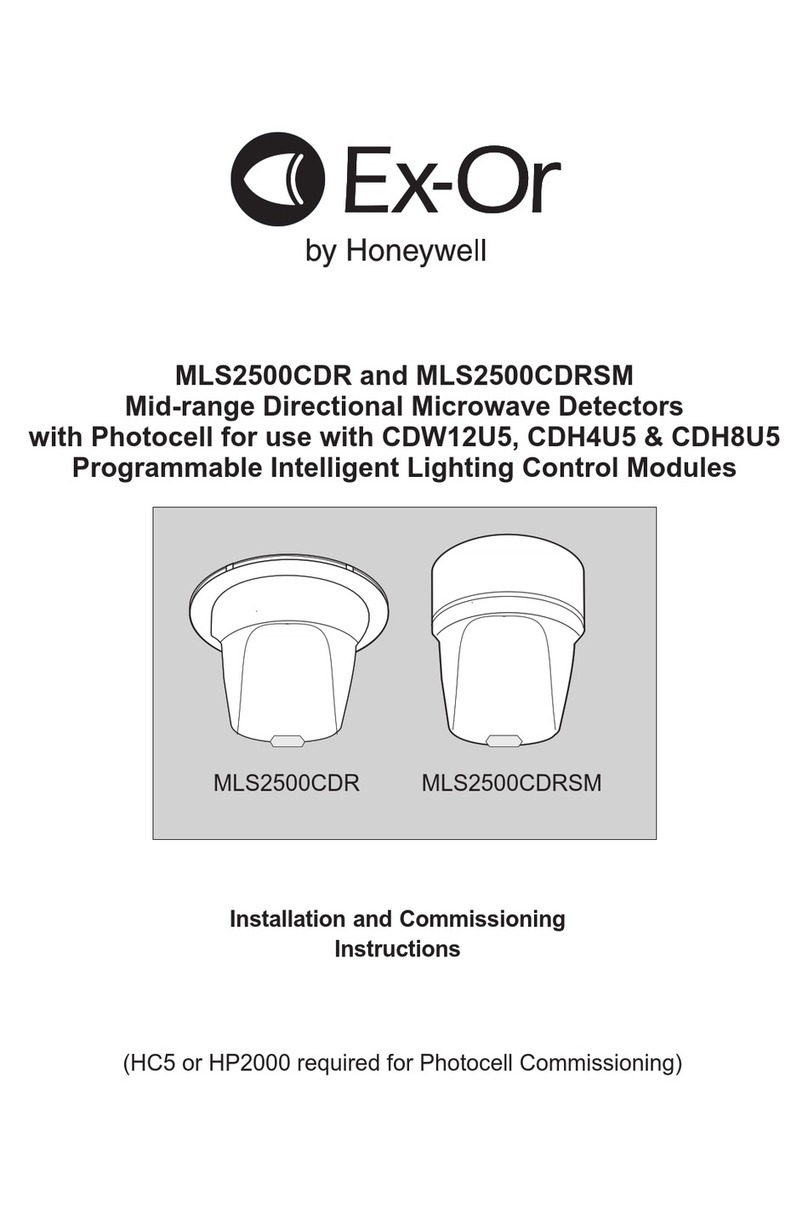
Honeywell
Honeywell Ex-Or MLS2500CDR Installation and commissioning instructions
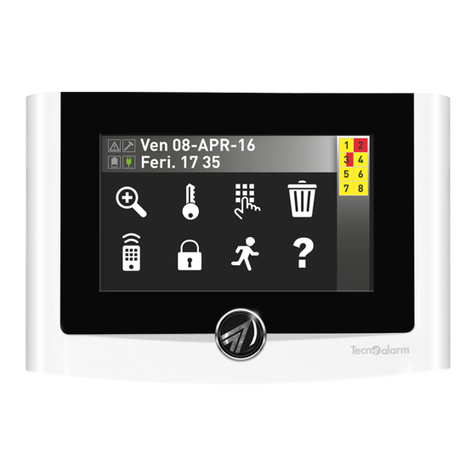
Technoalarm
Technoalarm UTS 4.3 PROX manual

AKO
AKO AKO-52062 installation guide
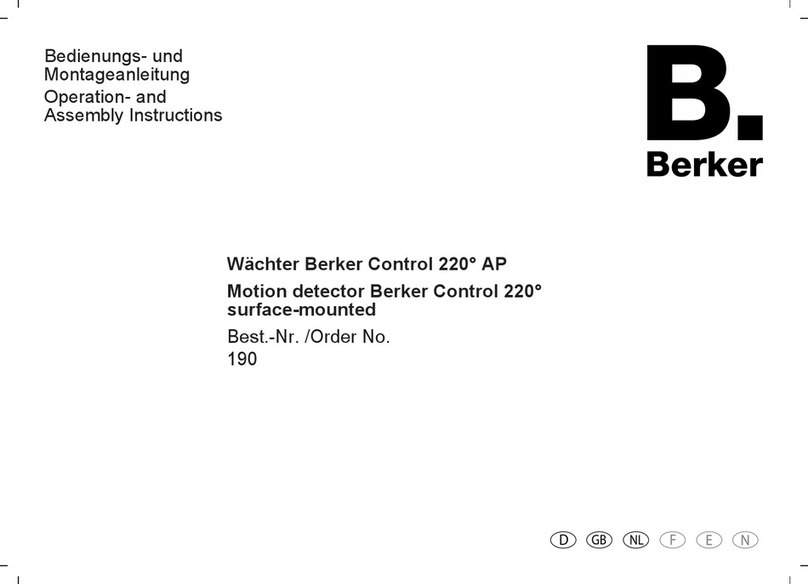
Berker
Berker Control 220 Operation and assembly instructions
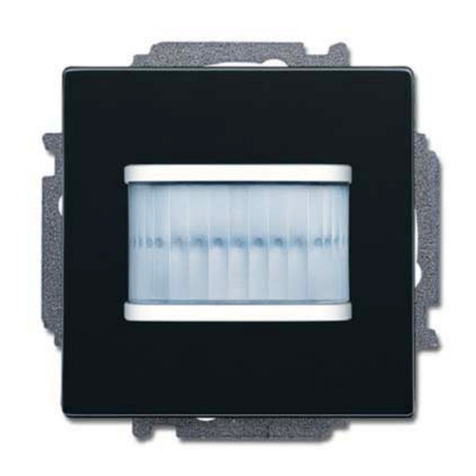
ABB
ABB MSA-F-1.1.1-***-WL series Technical reference manual
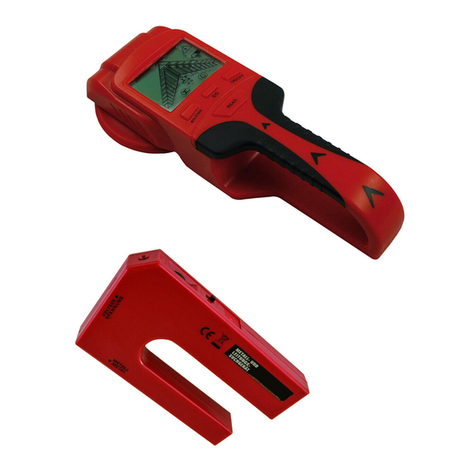
REV Ritter
REV Ritter JDT-08 user manual
